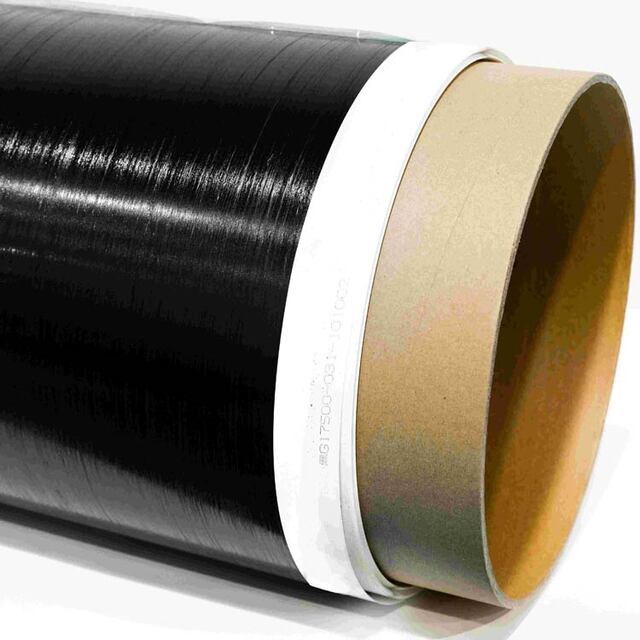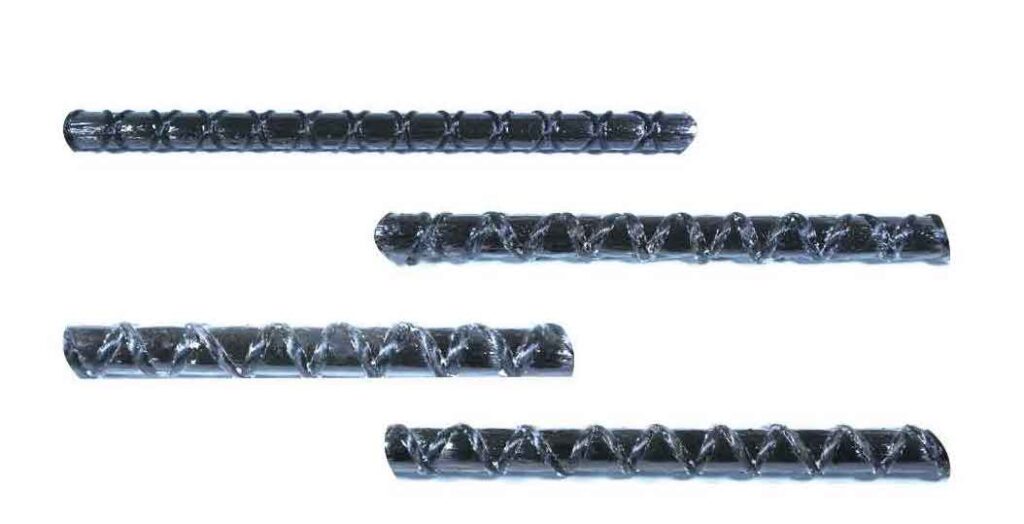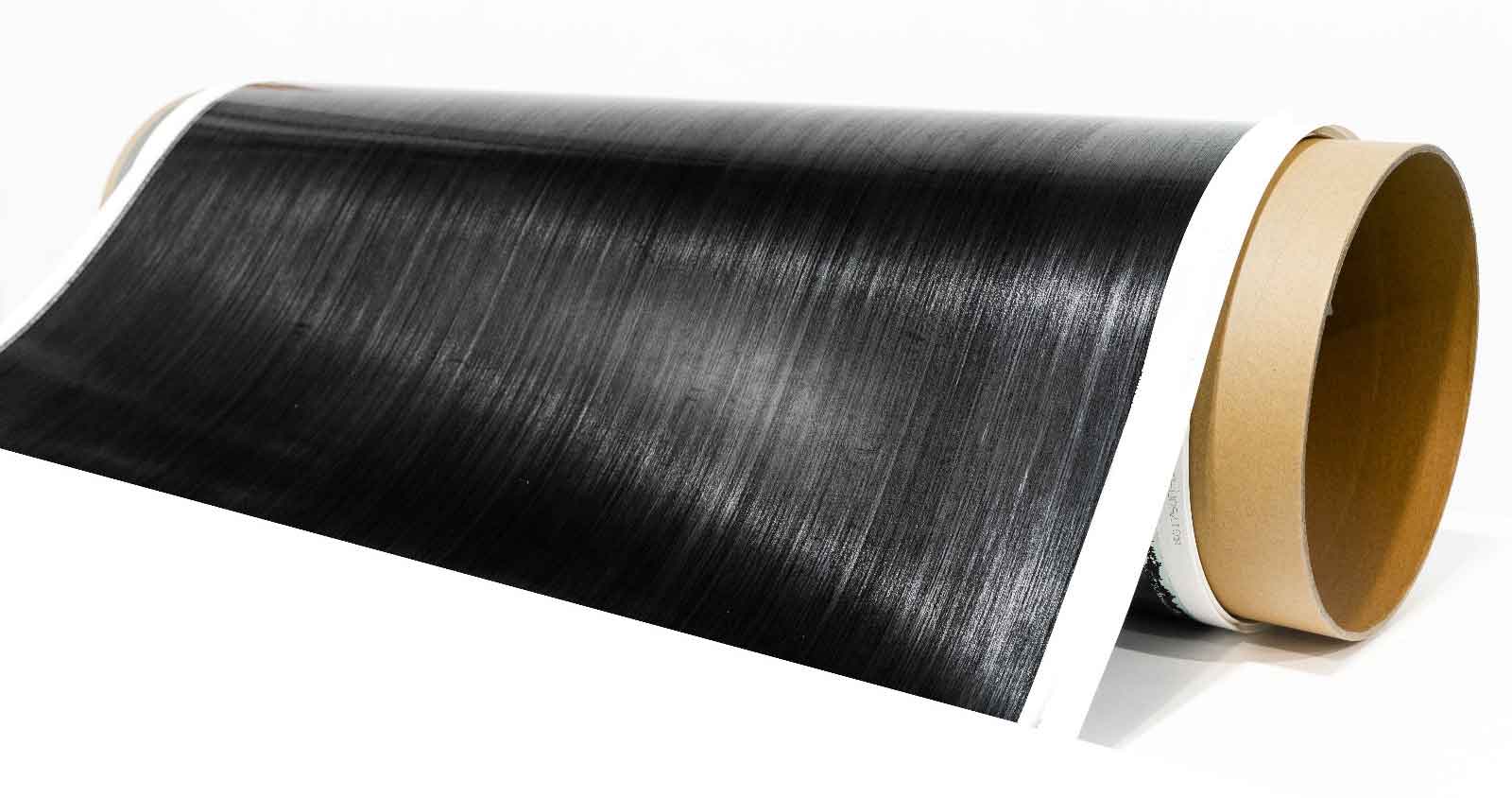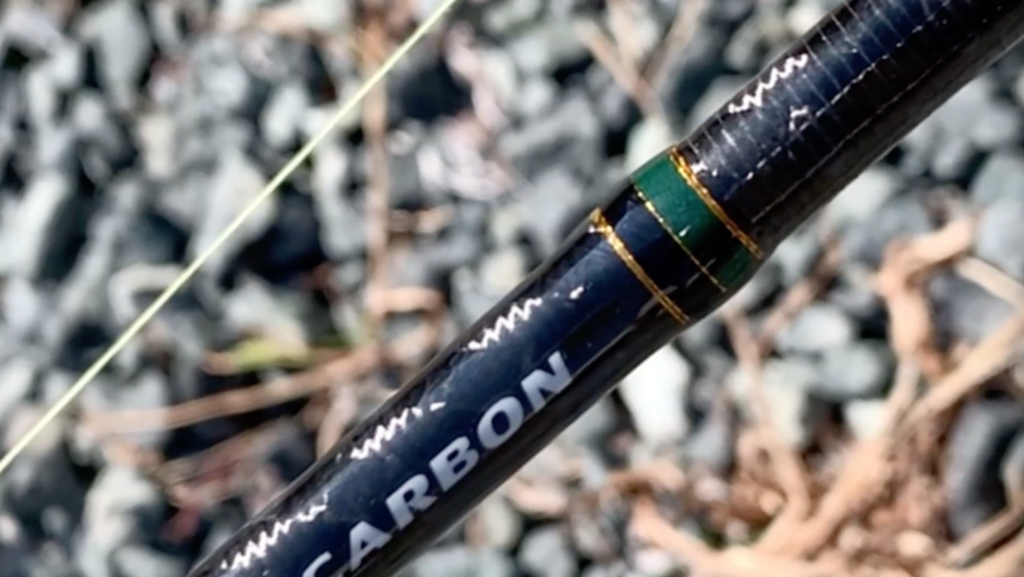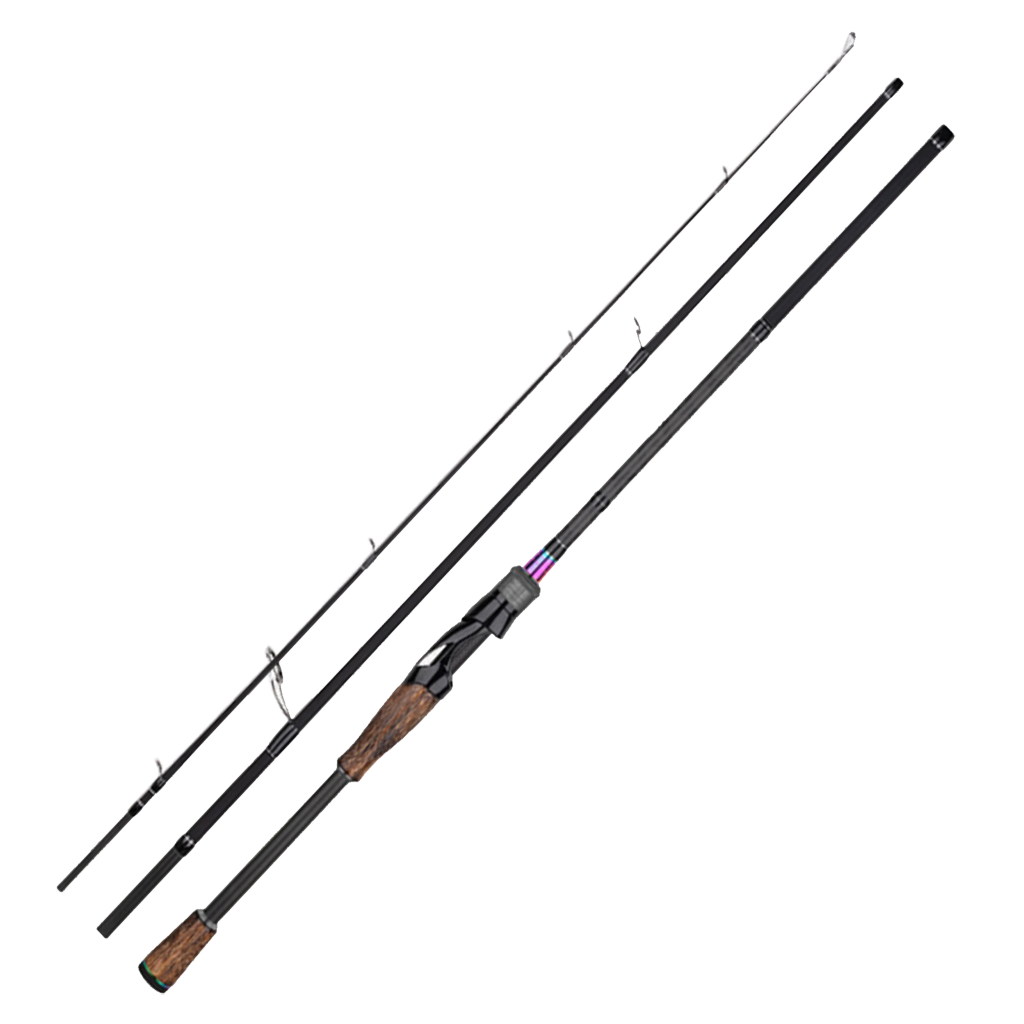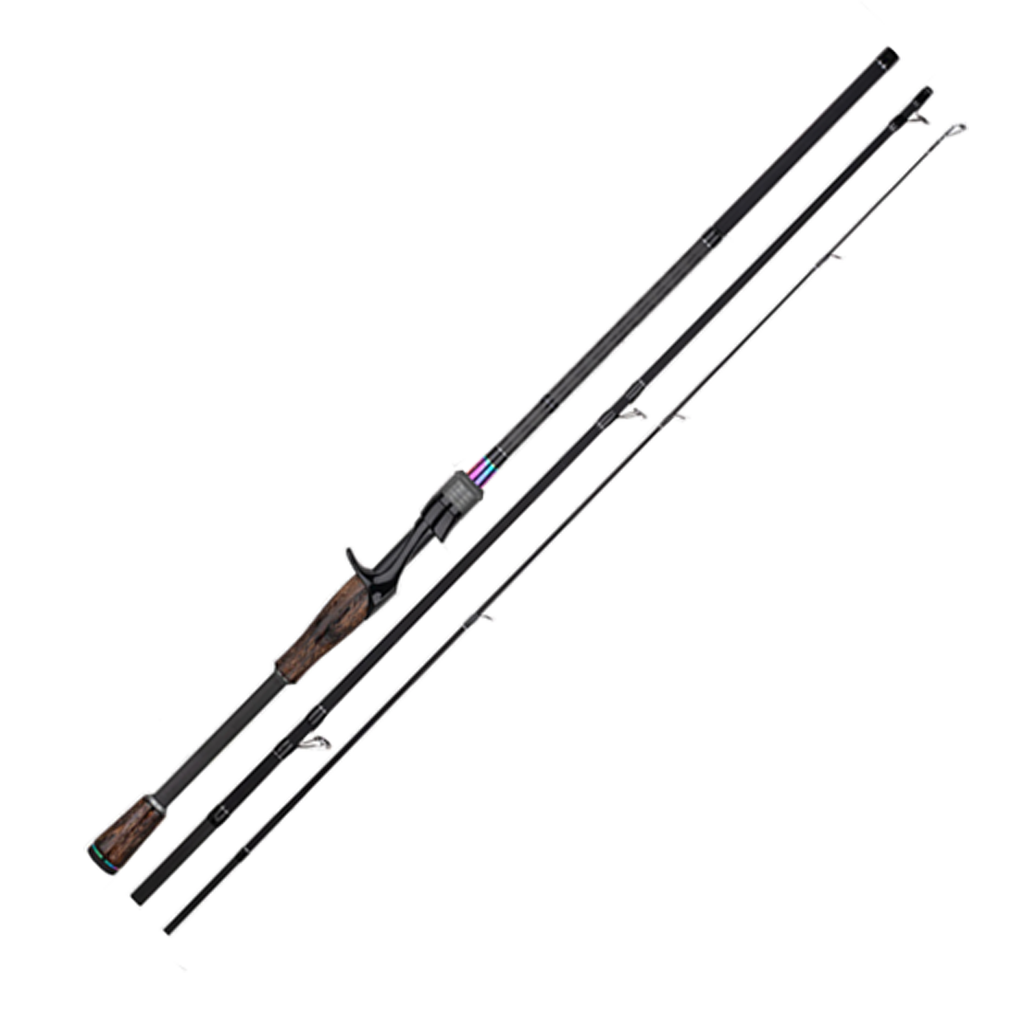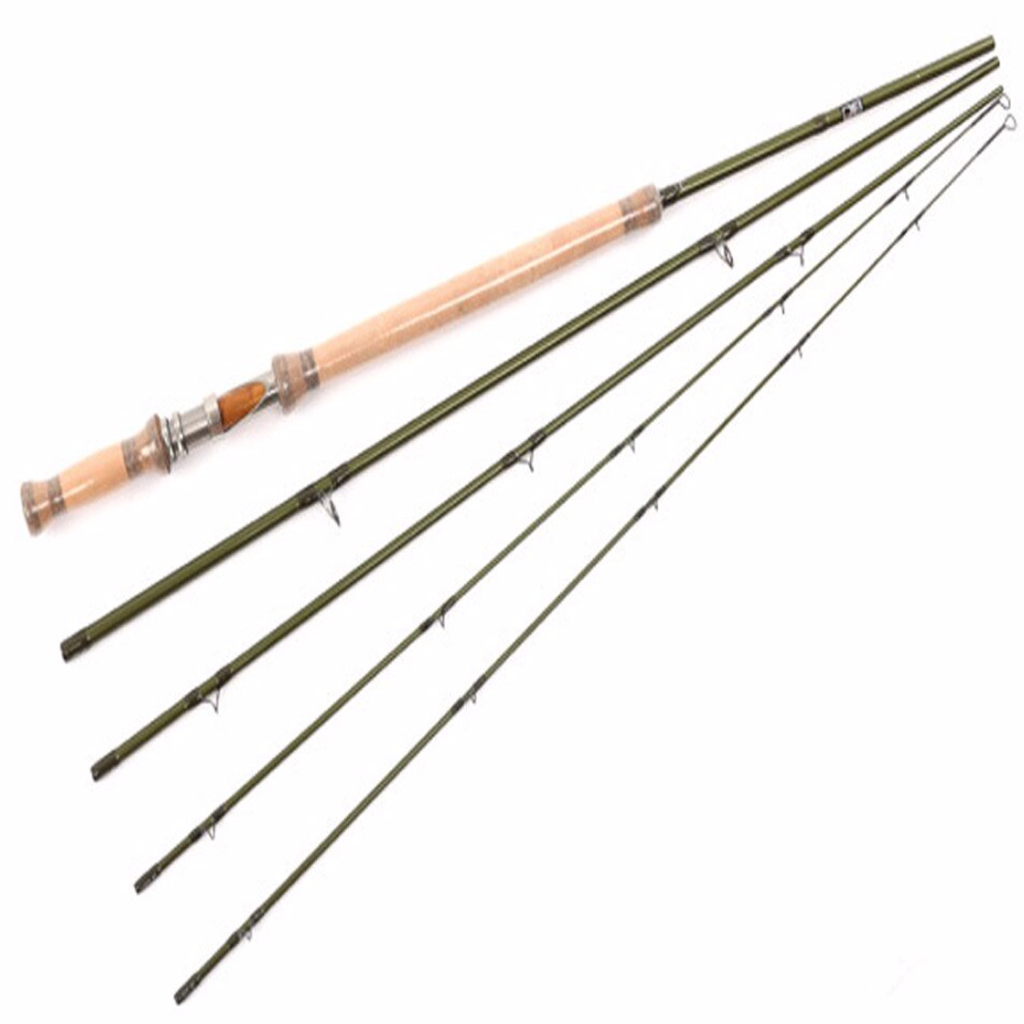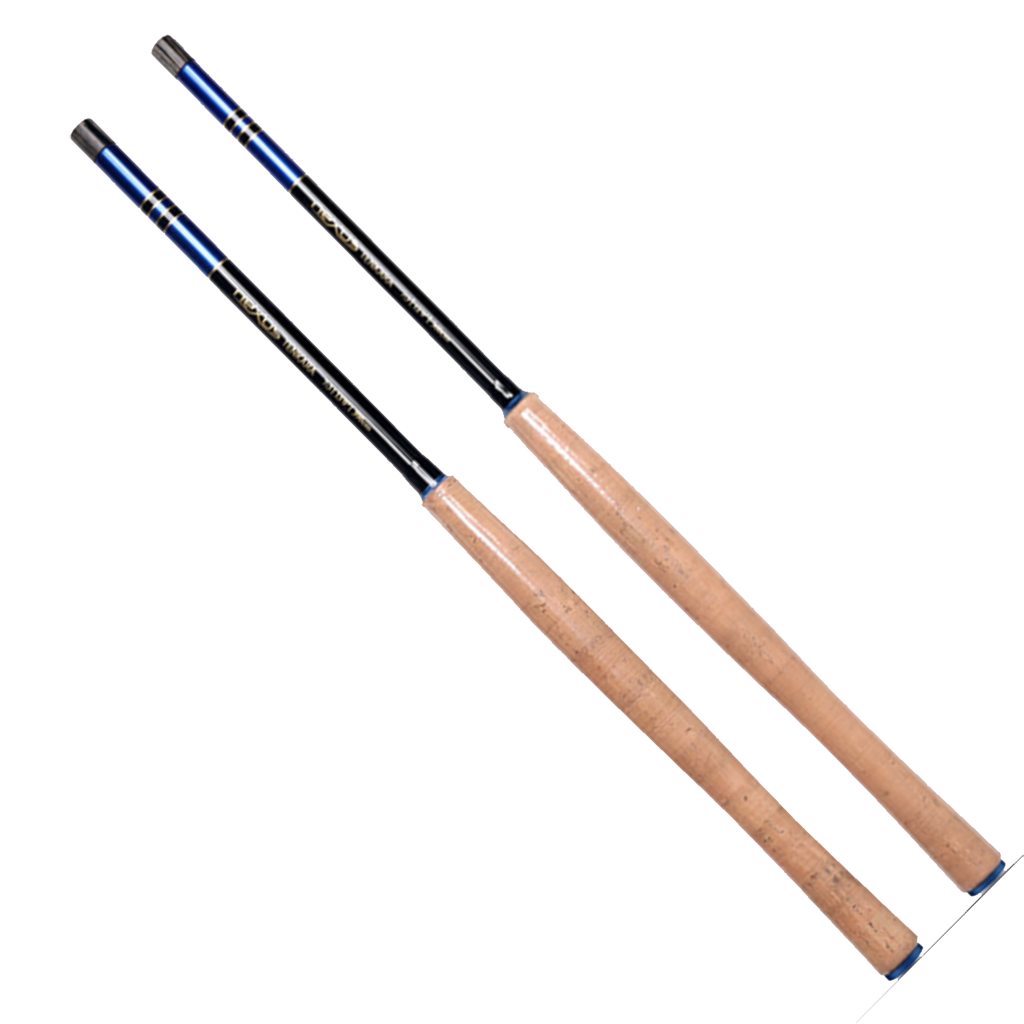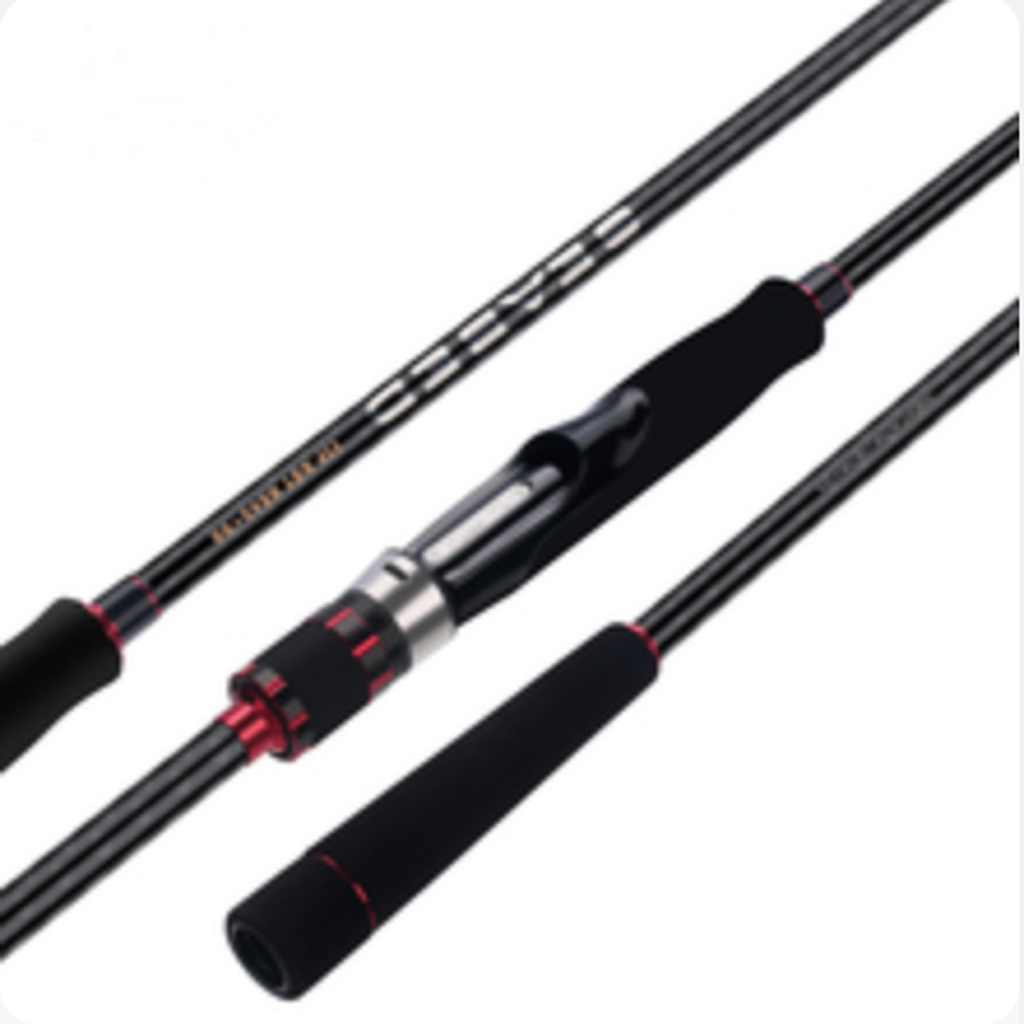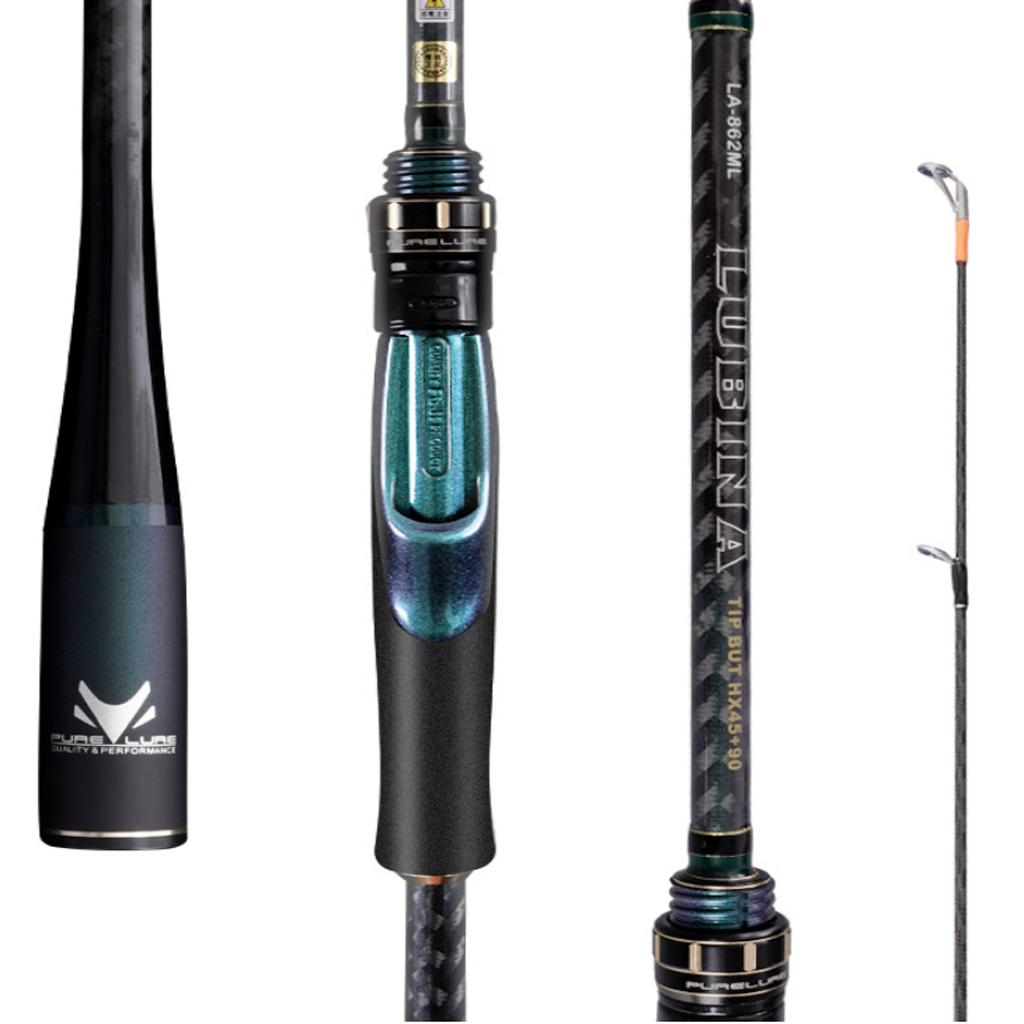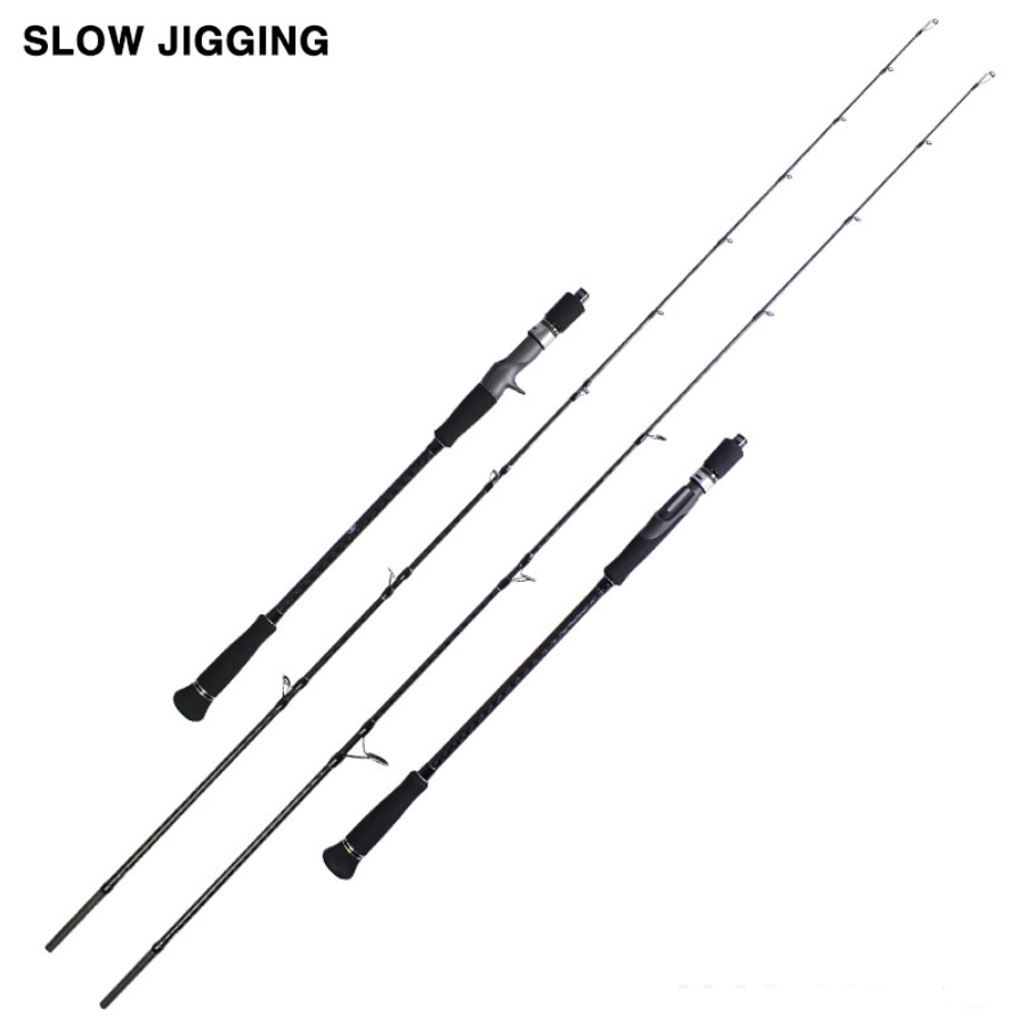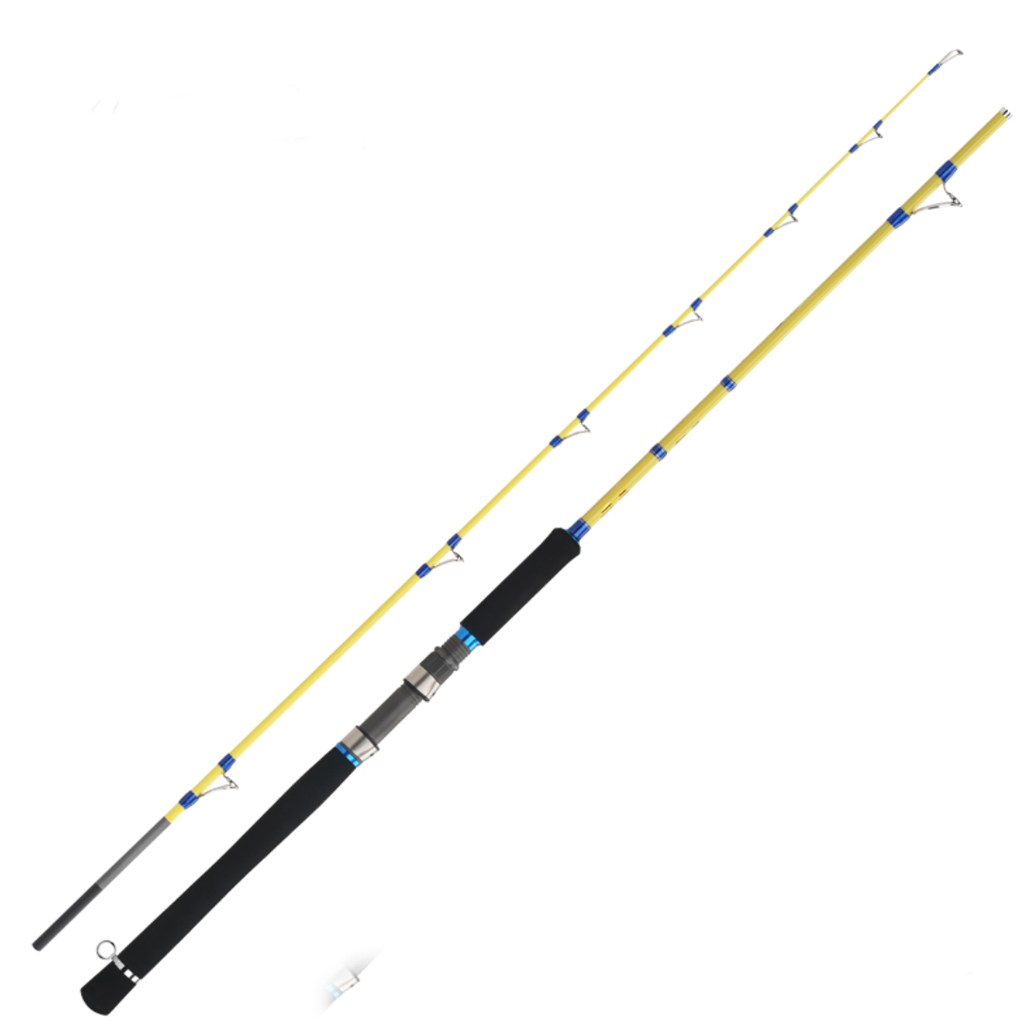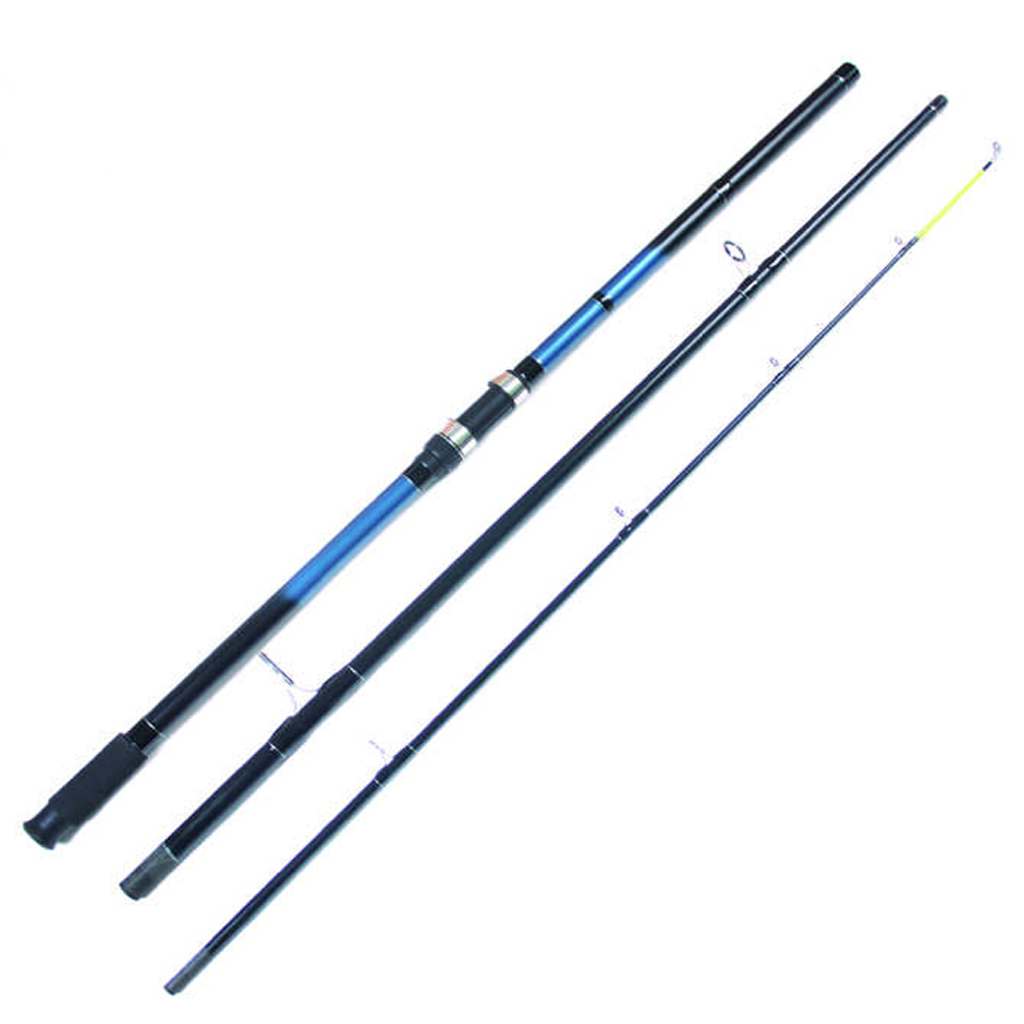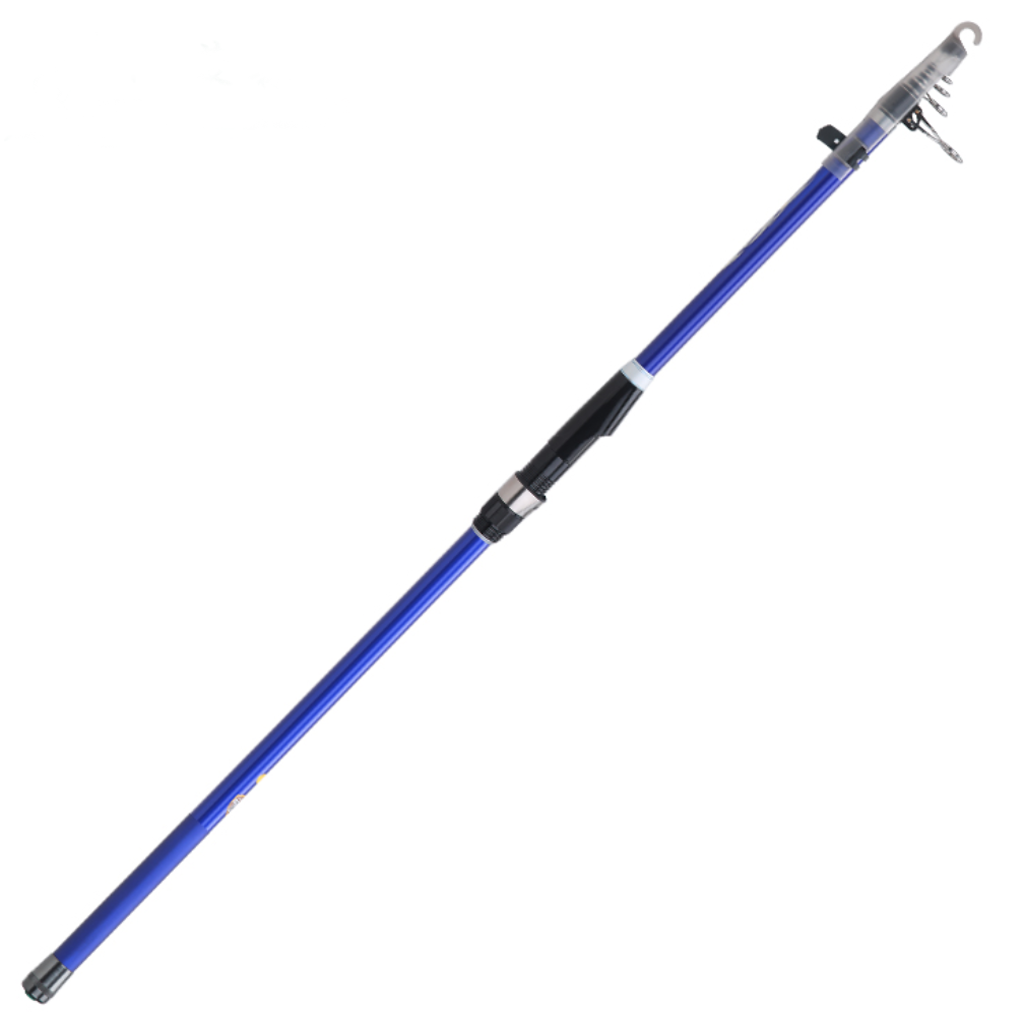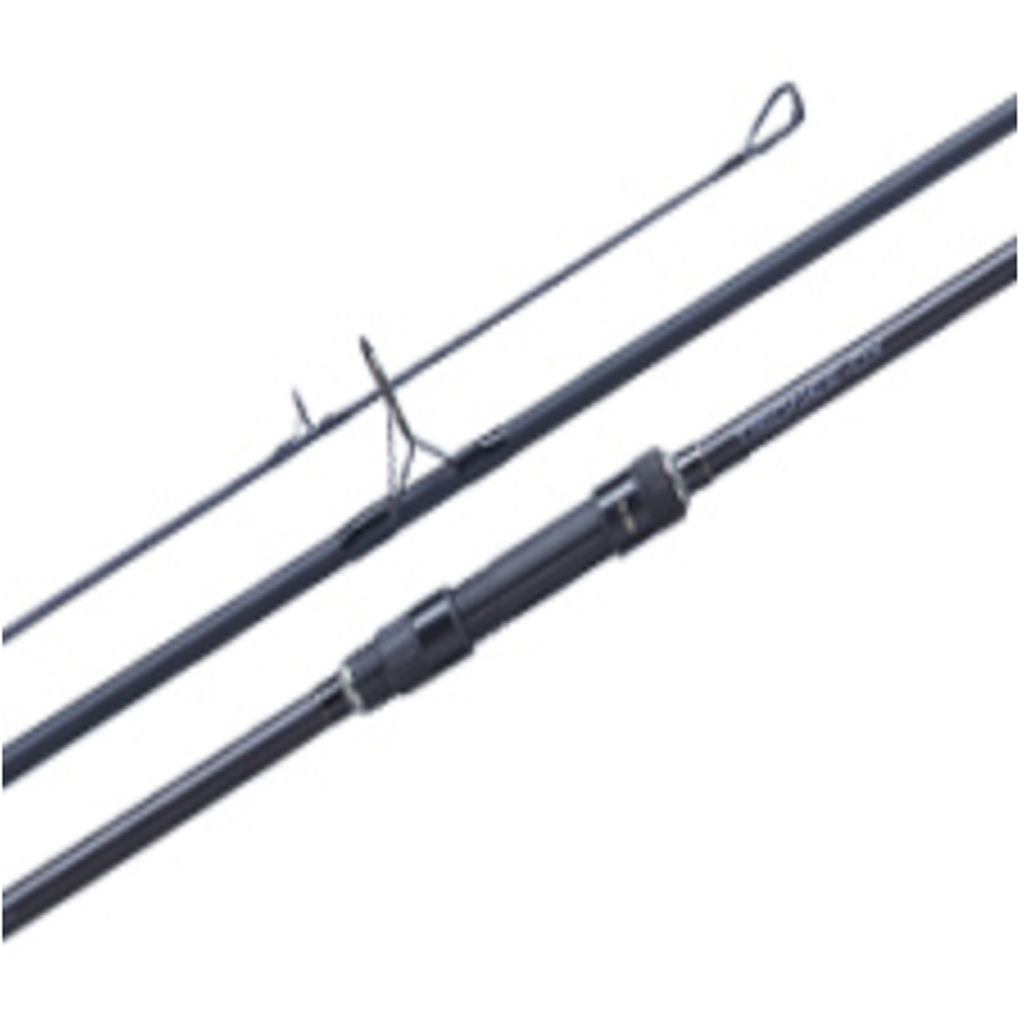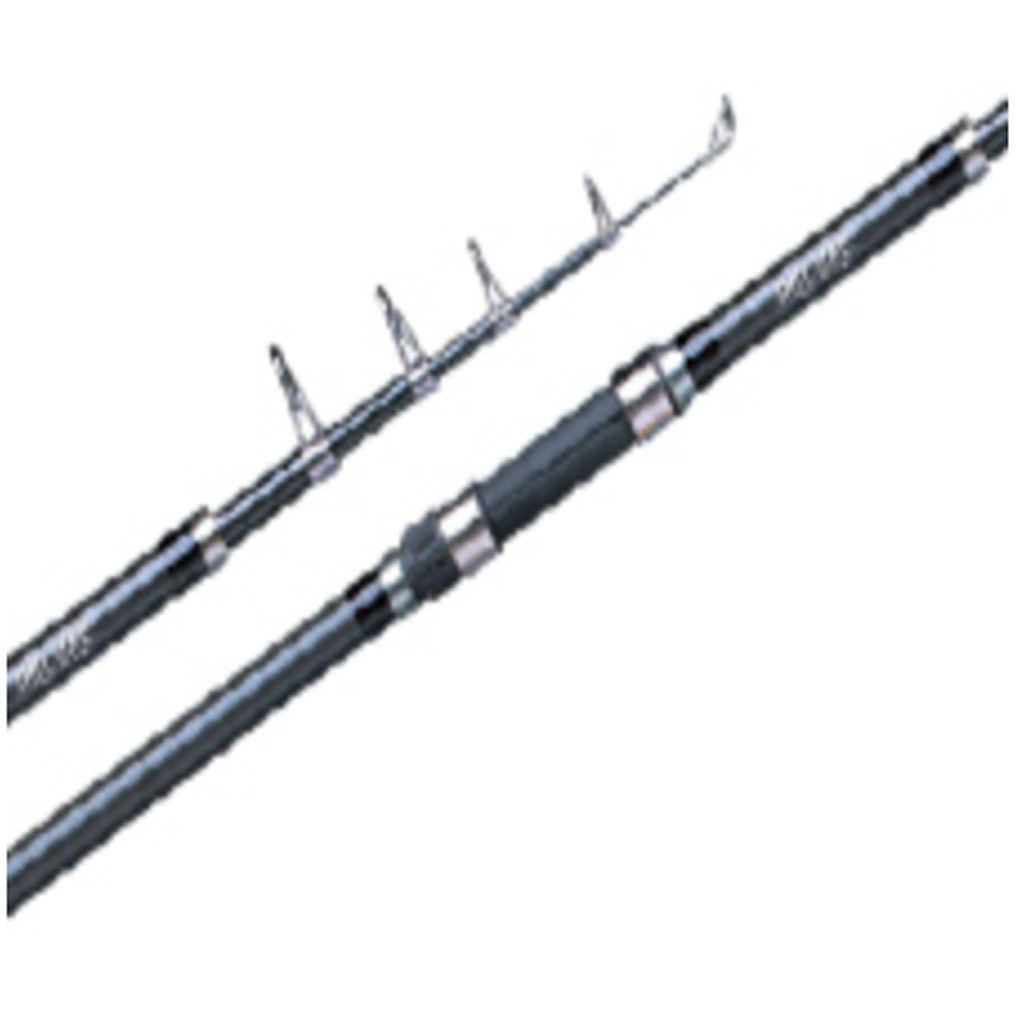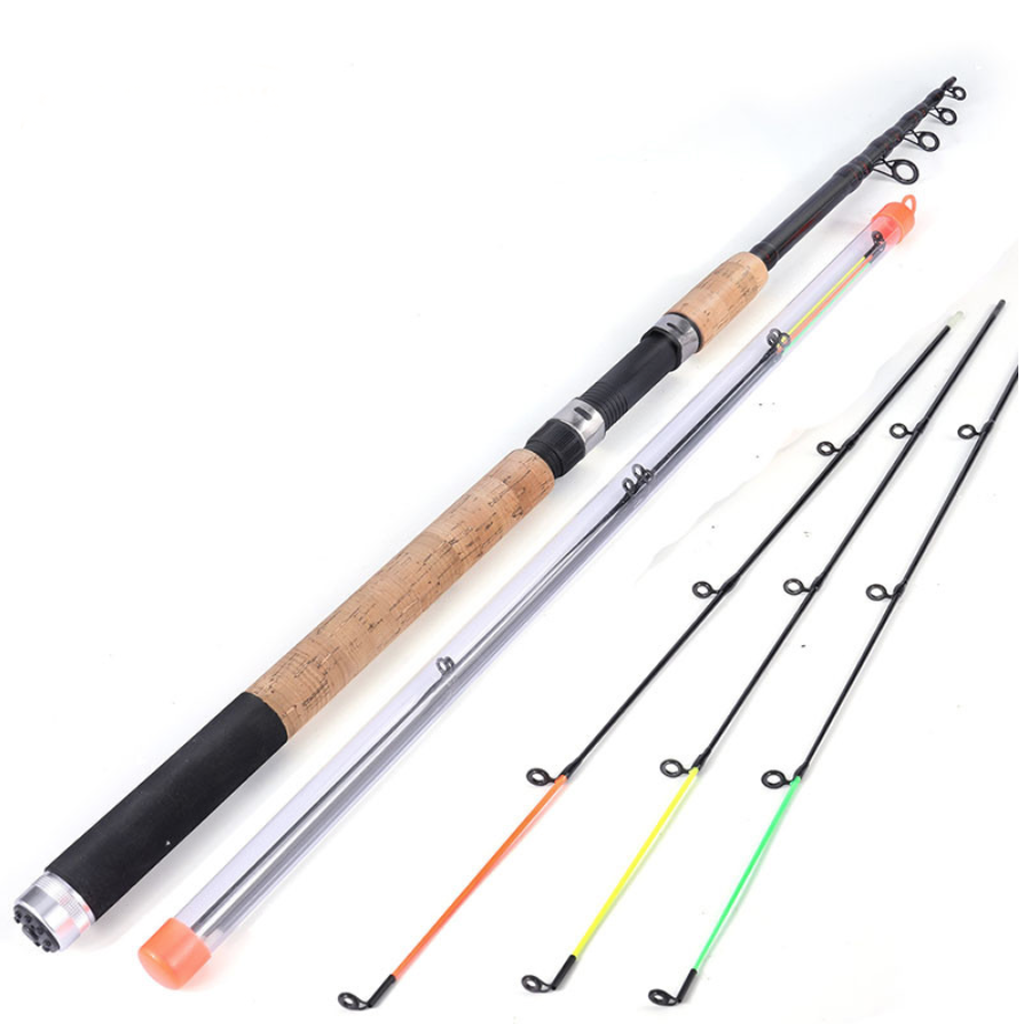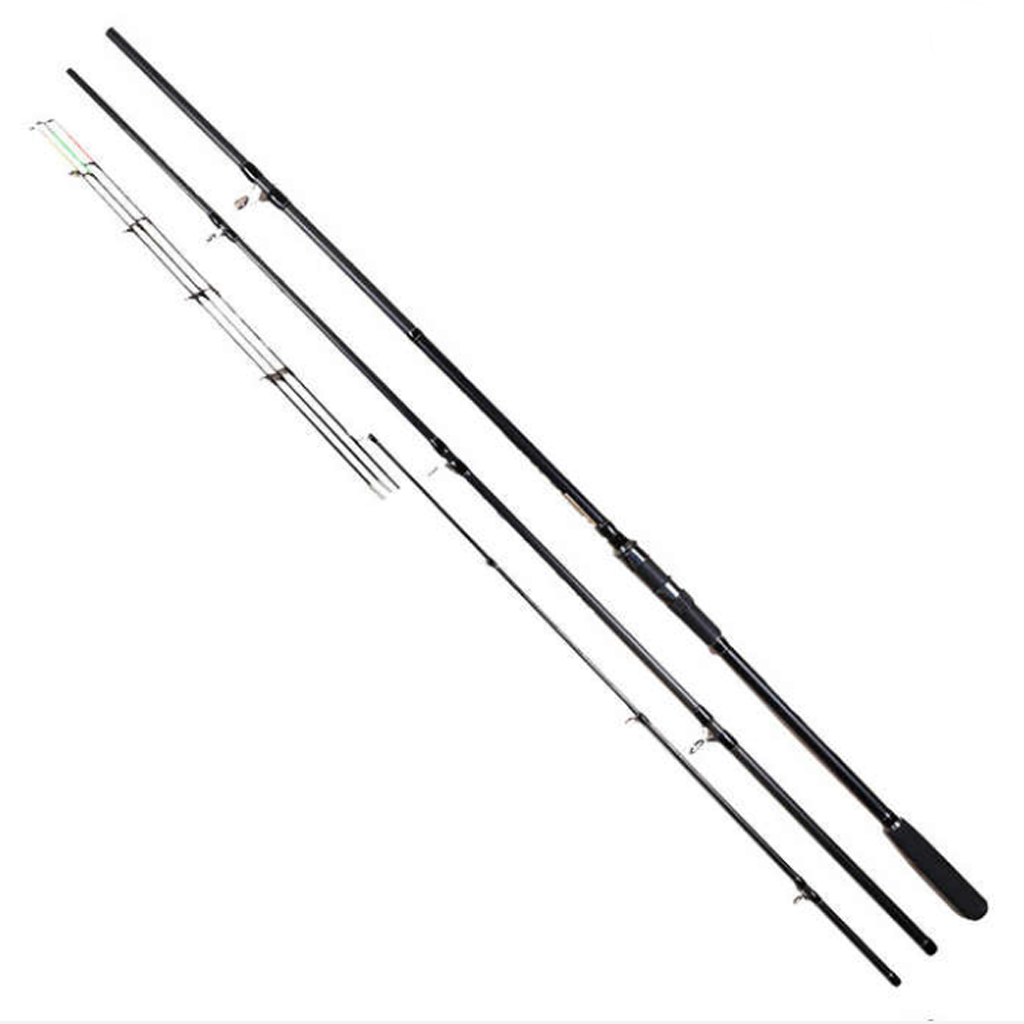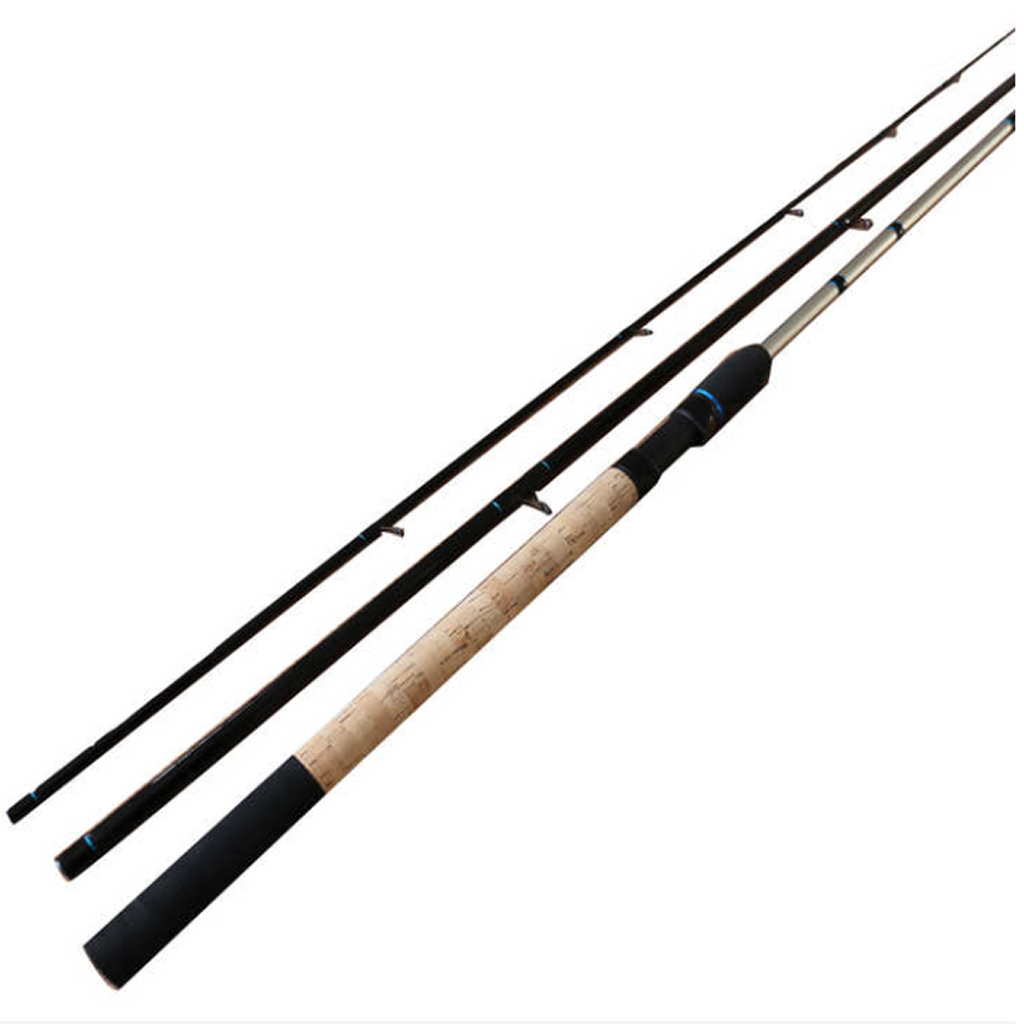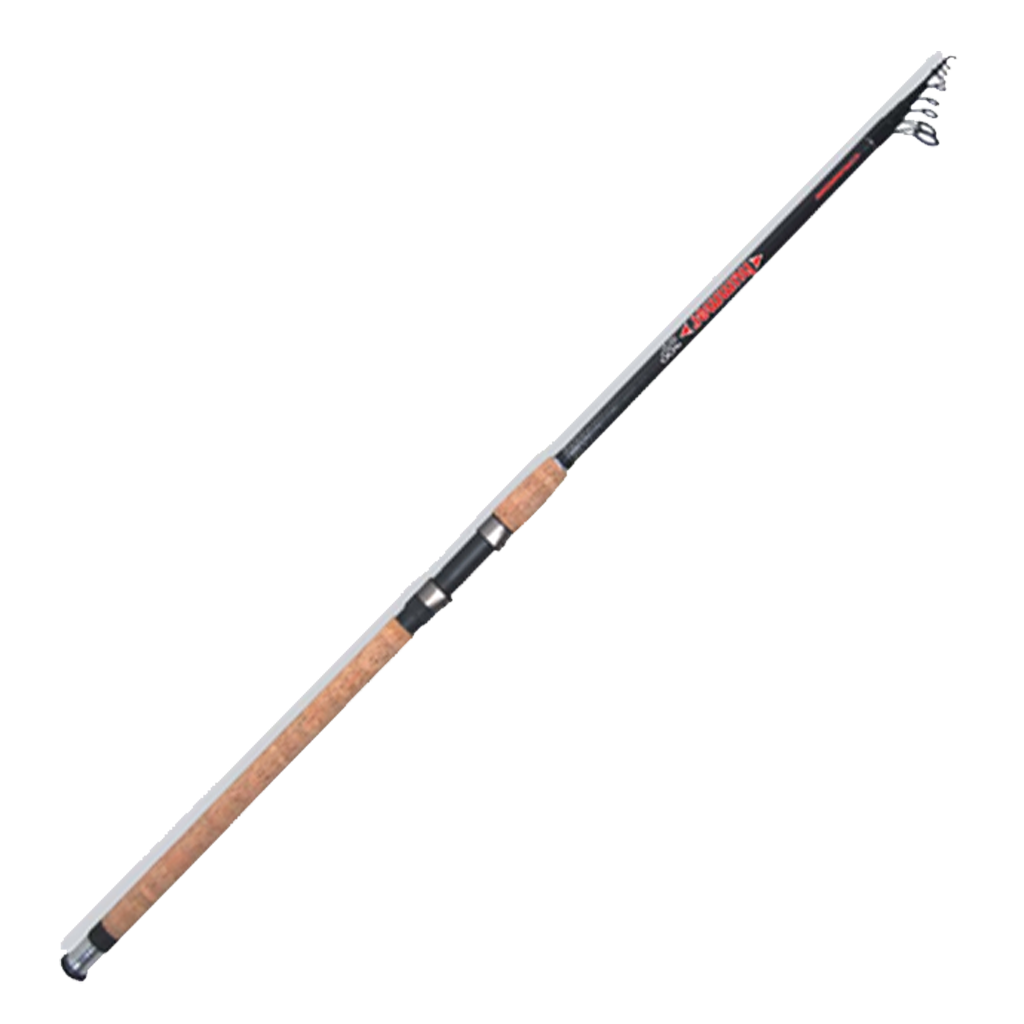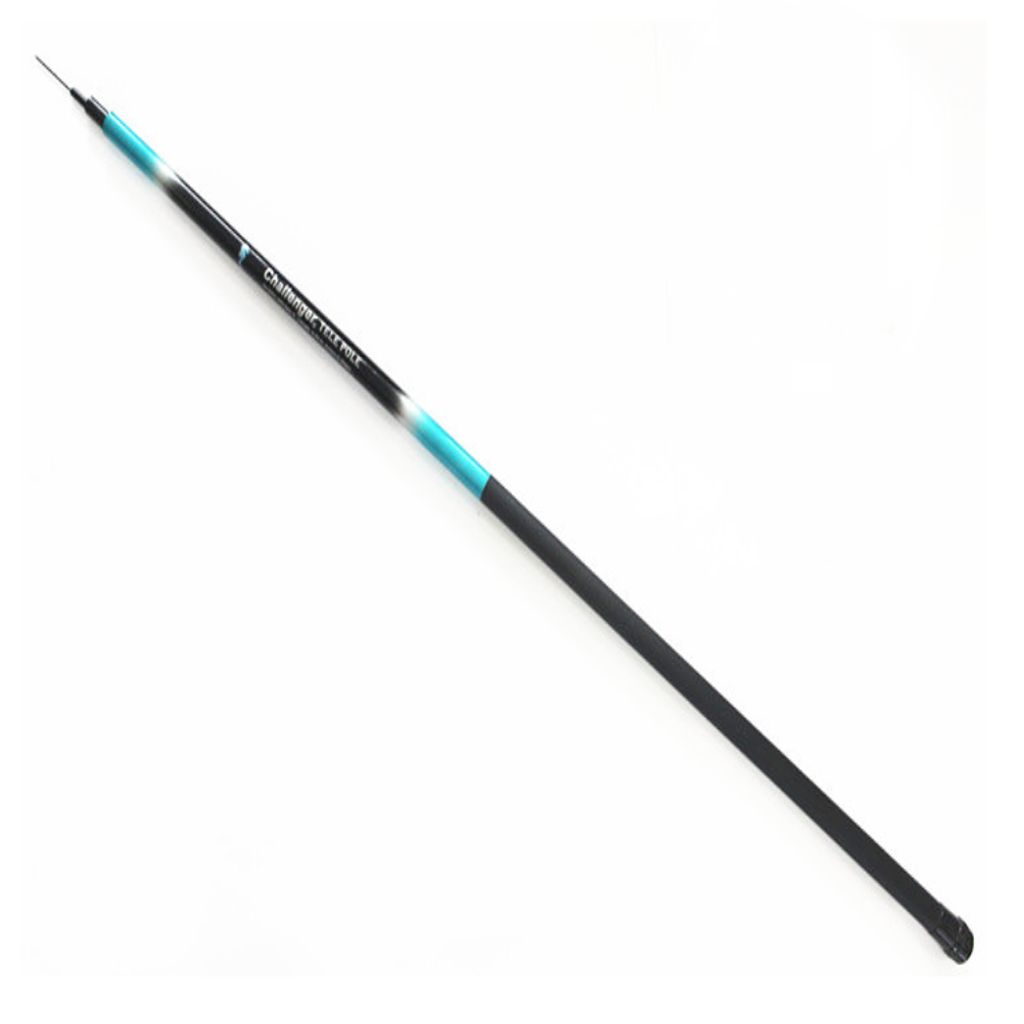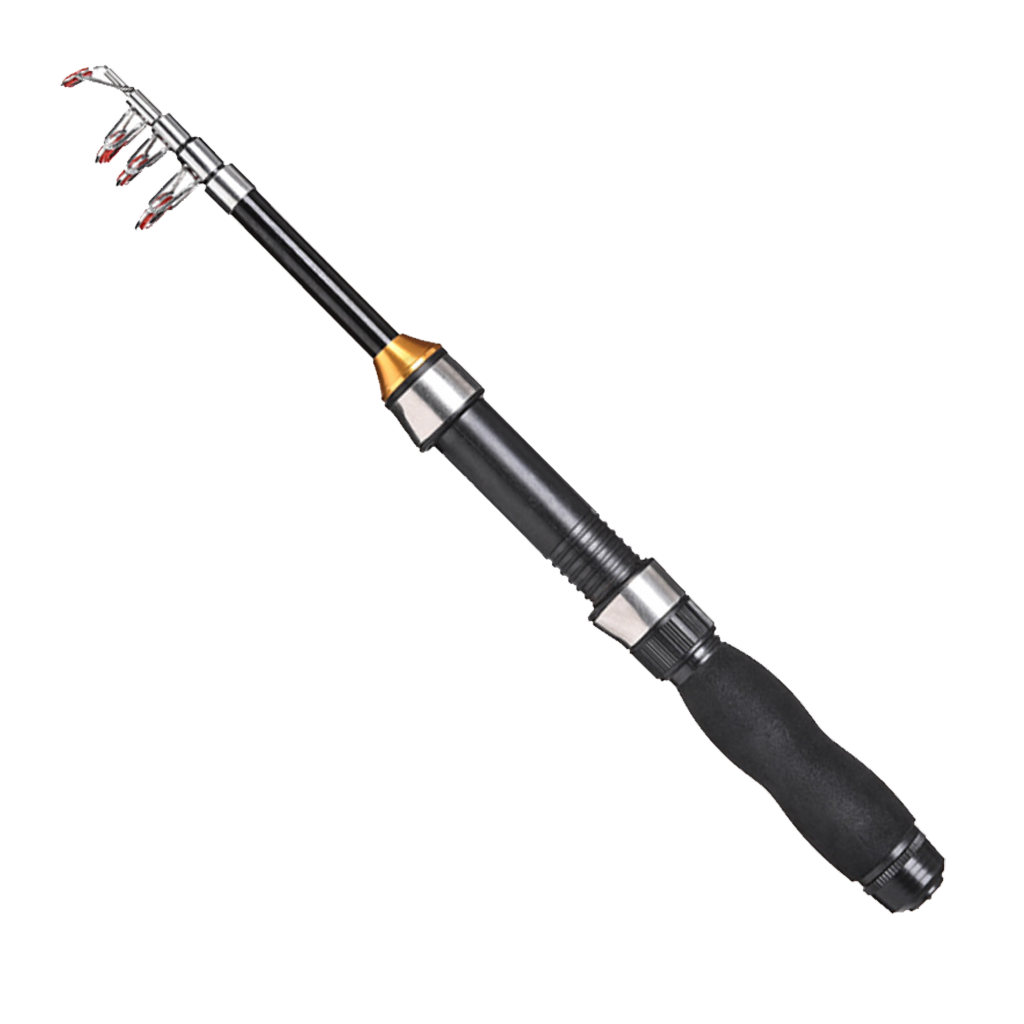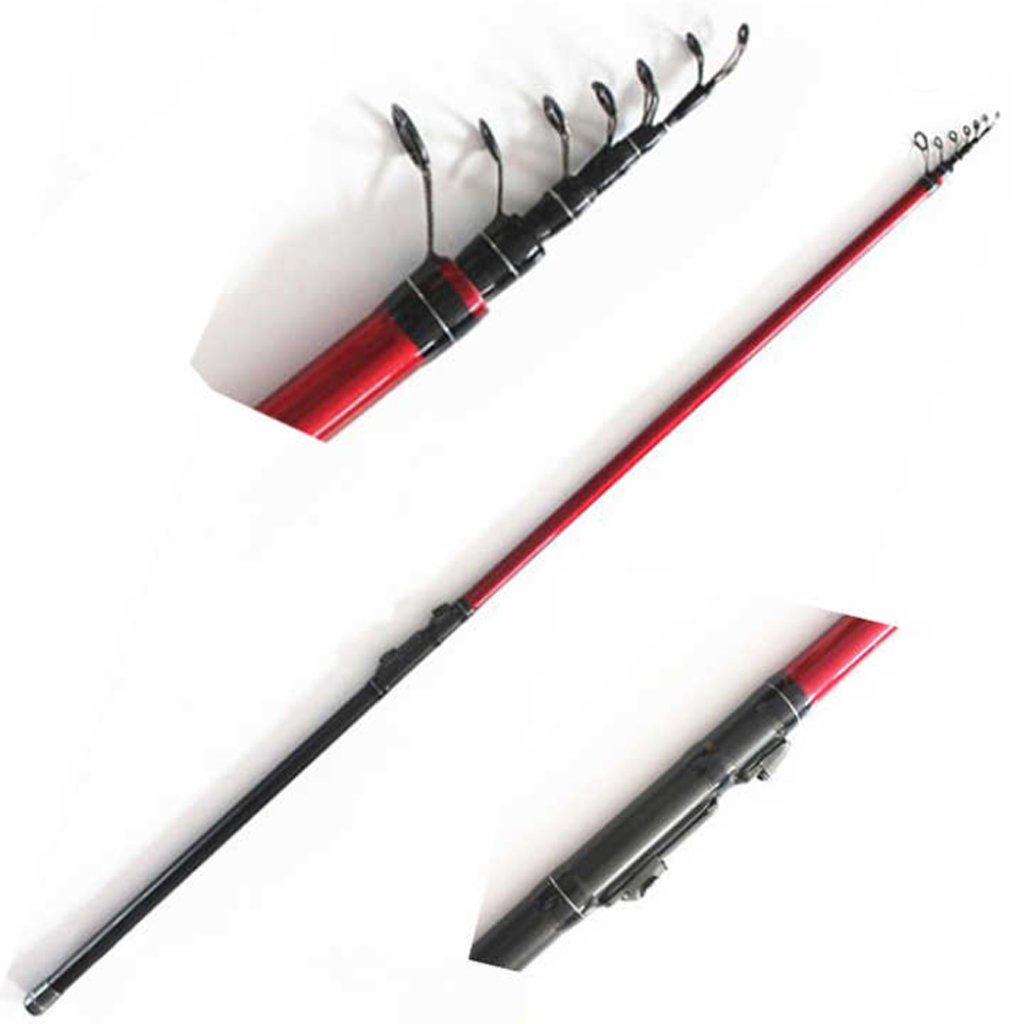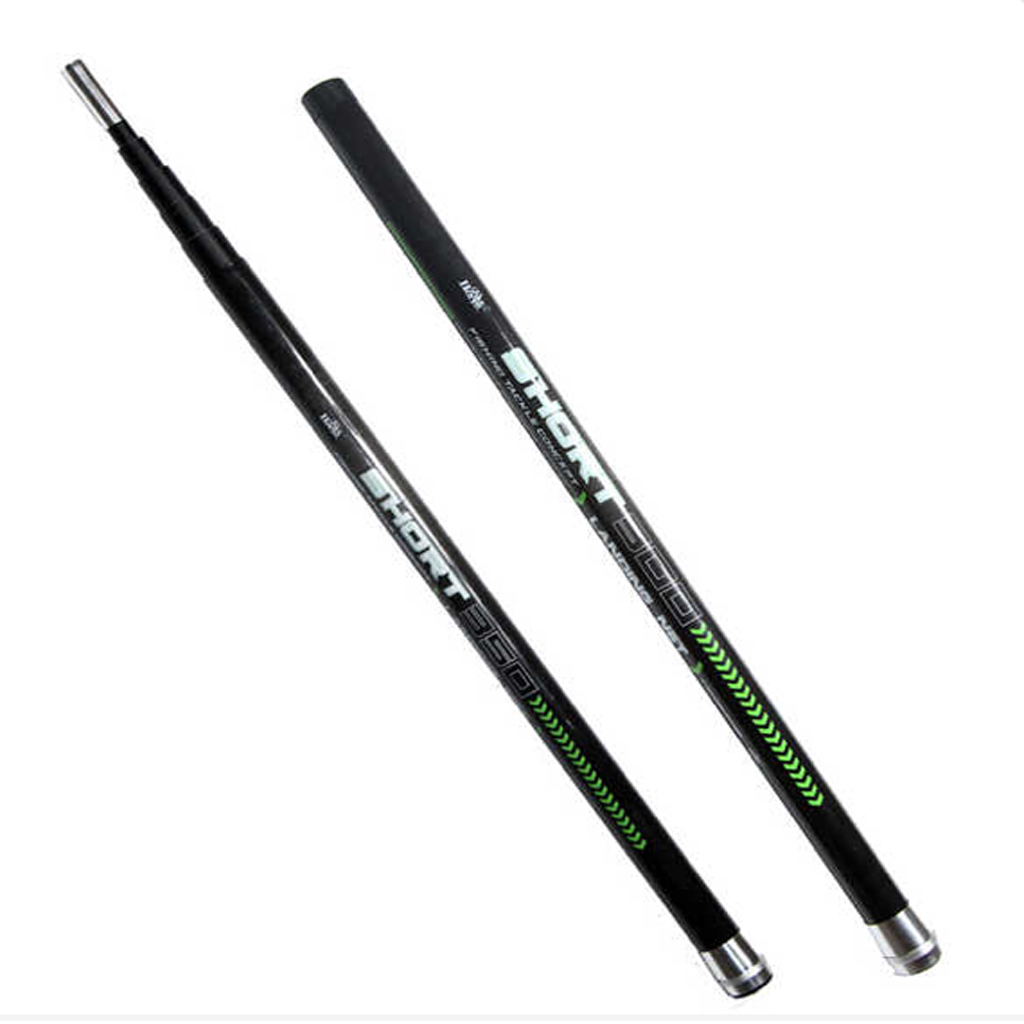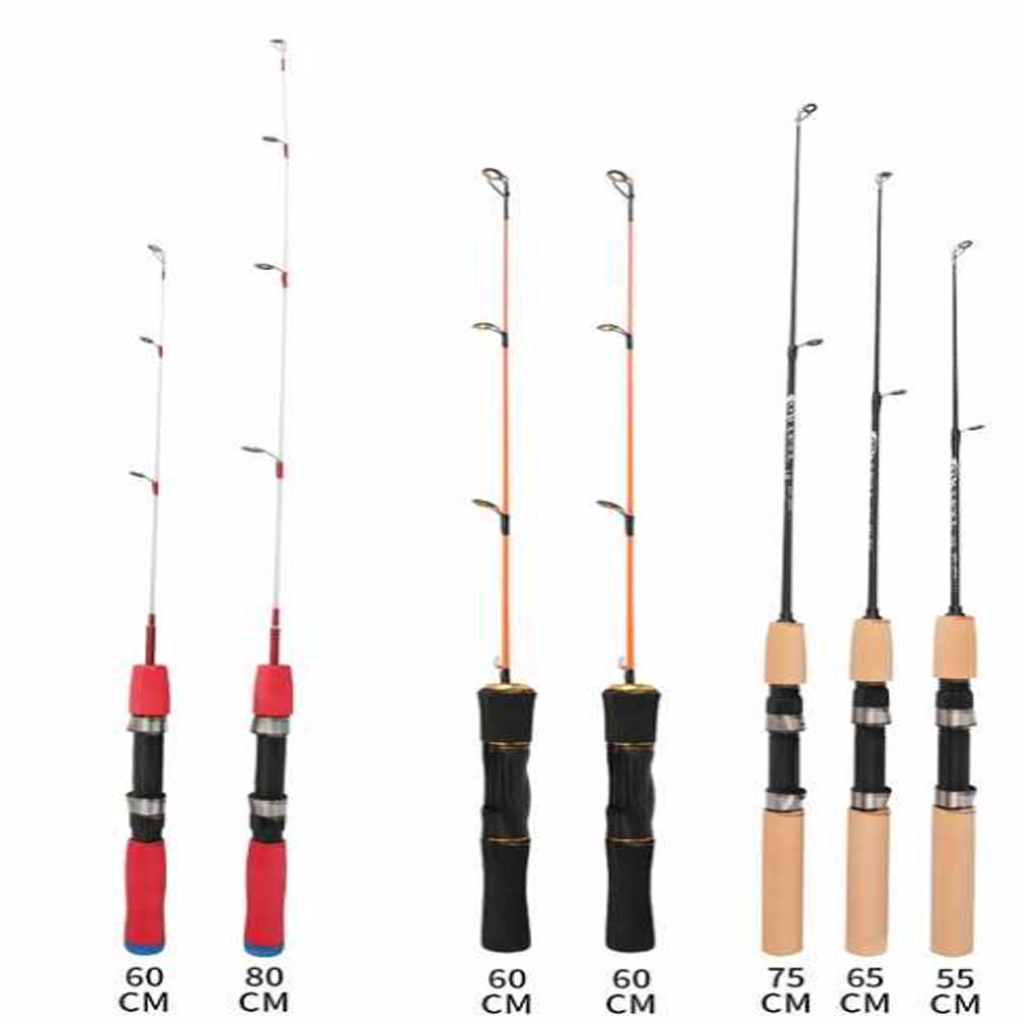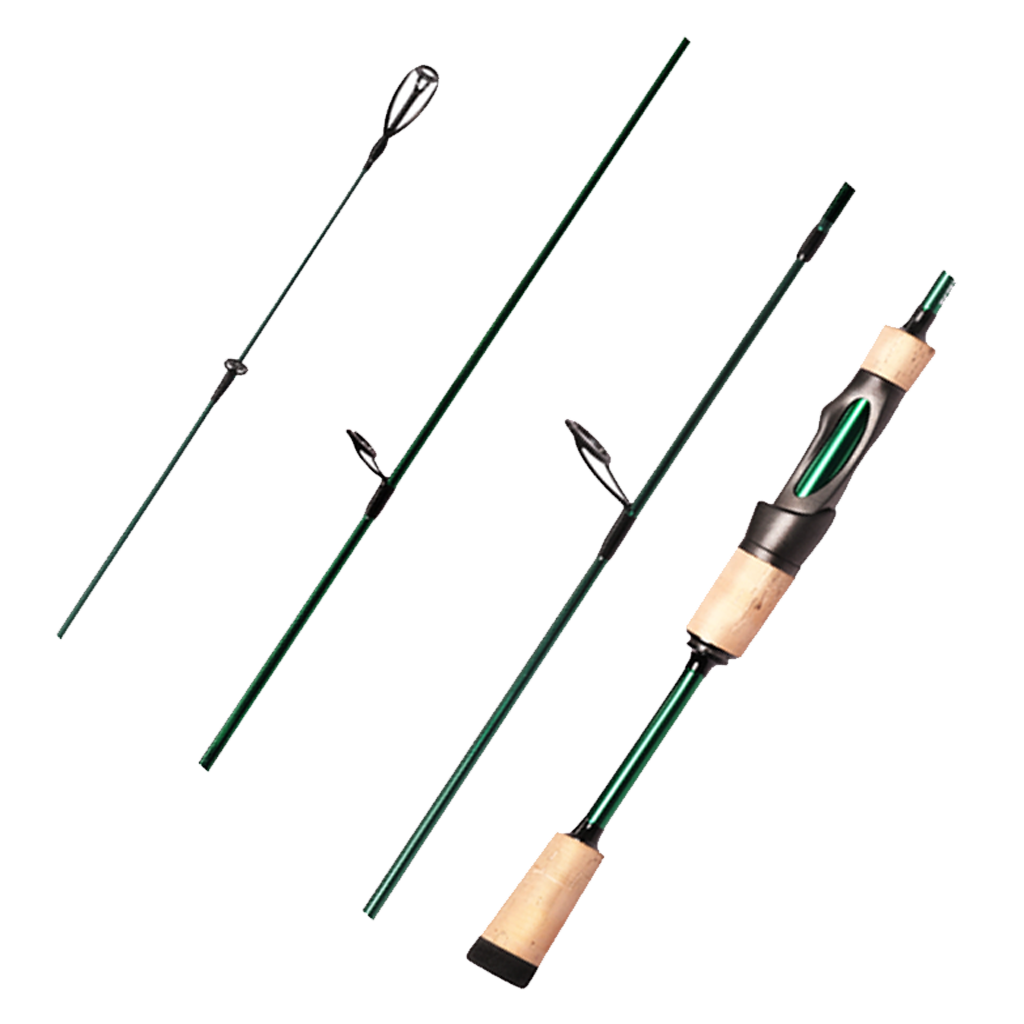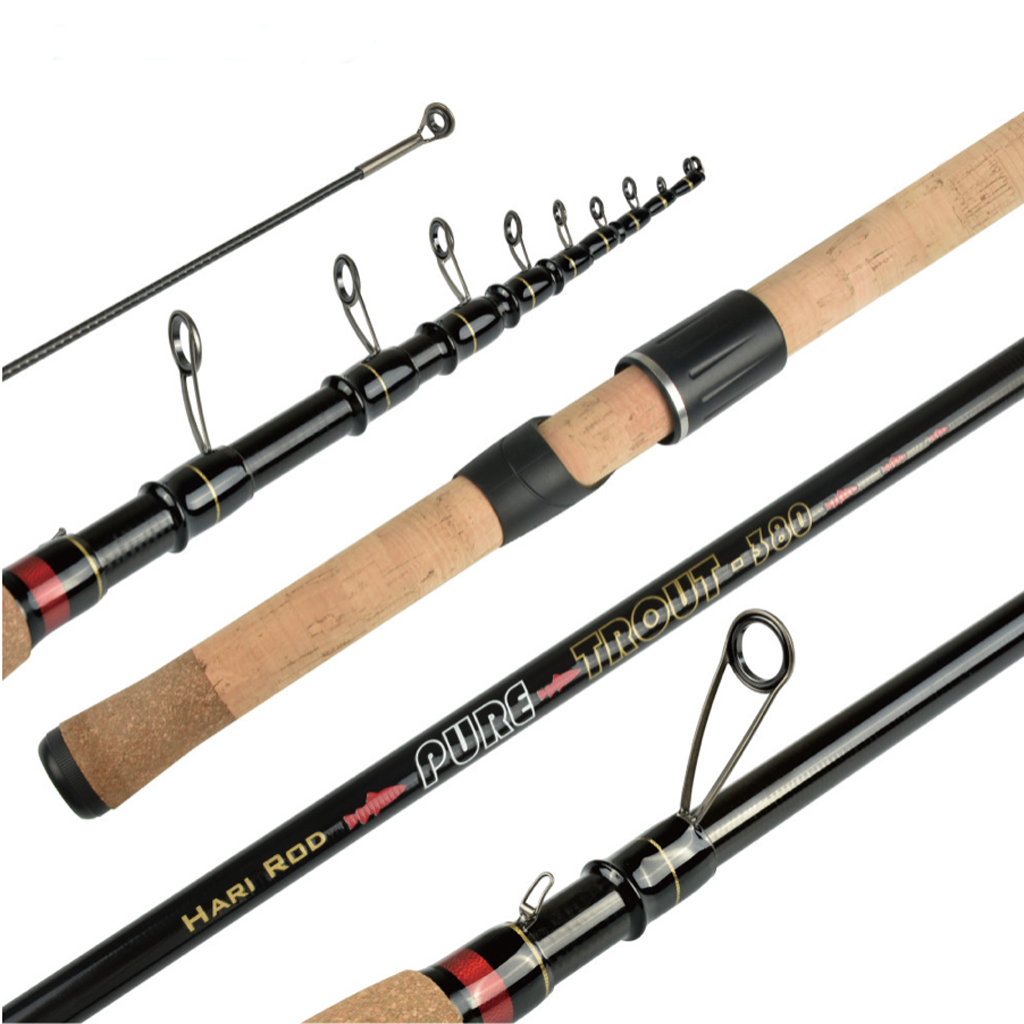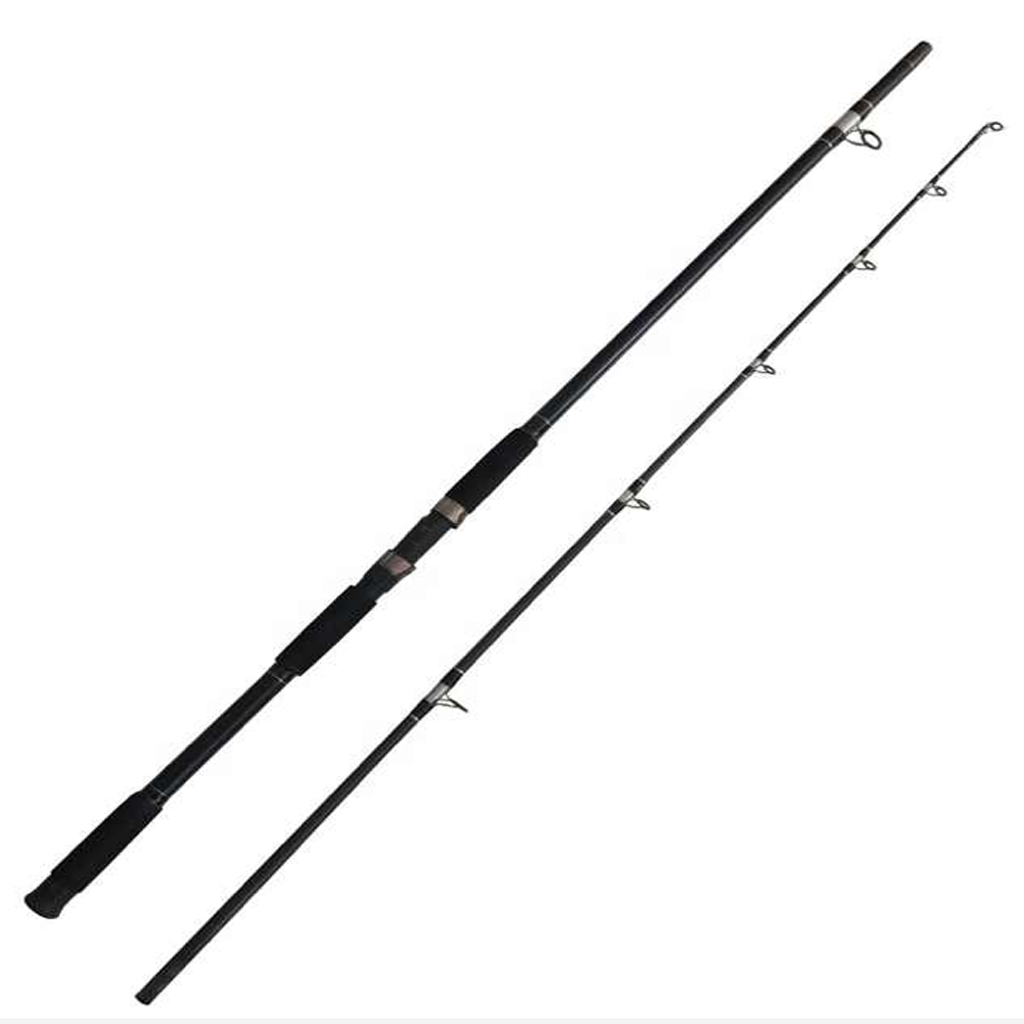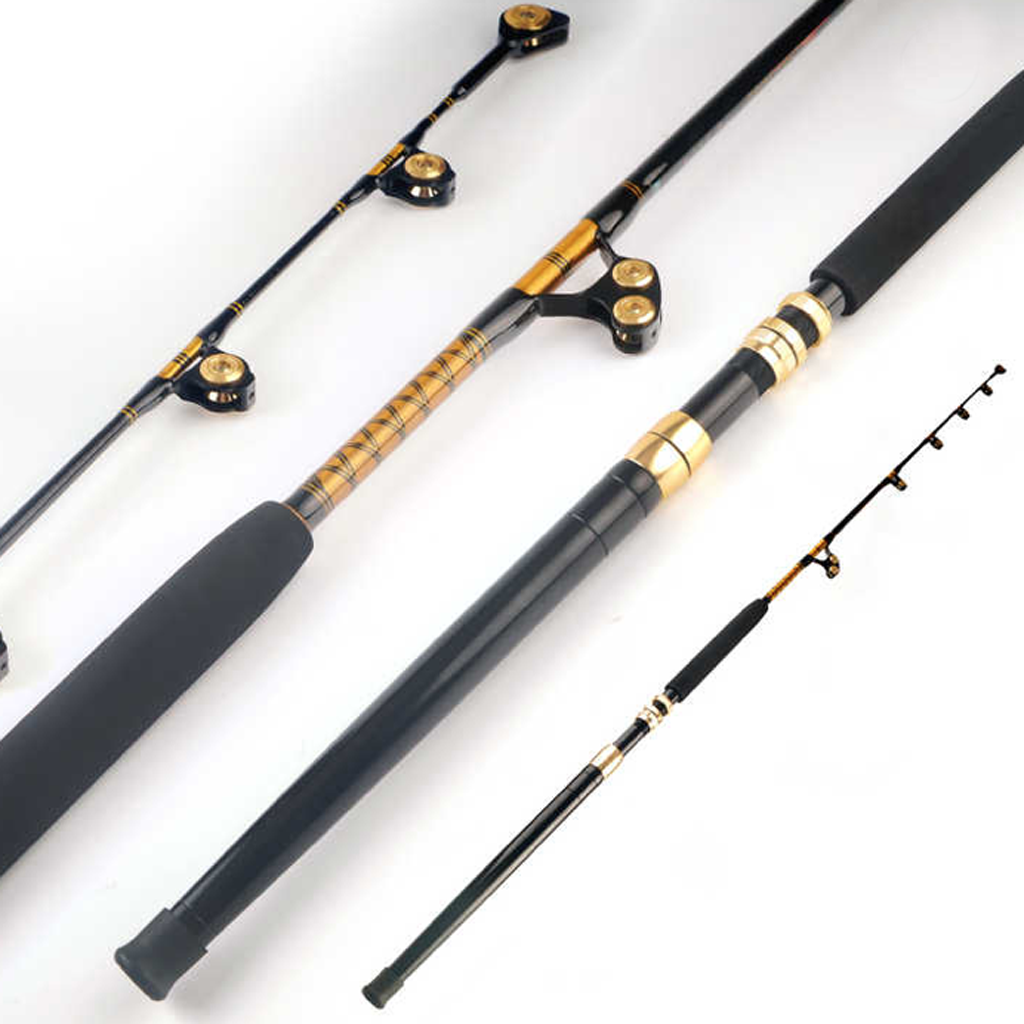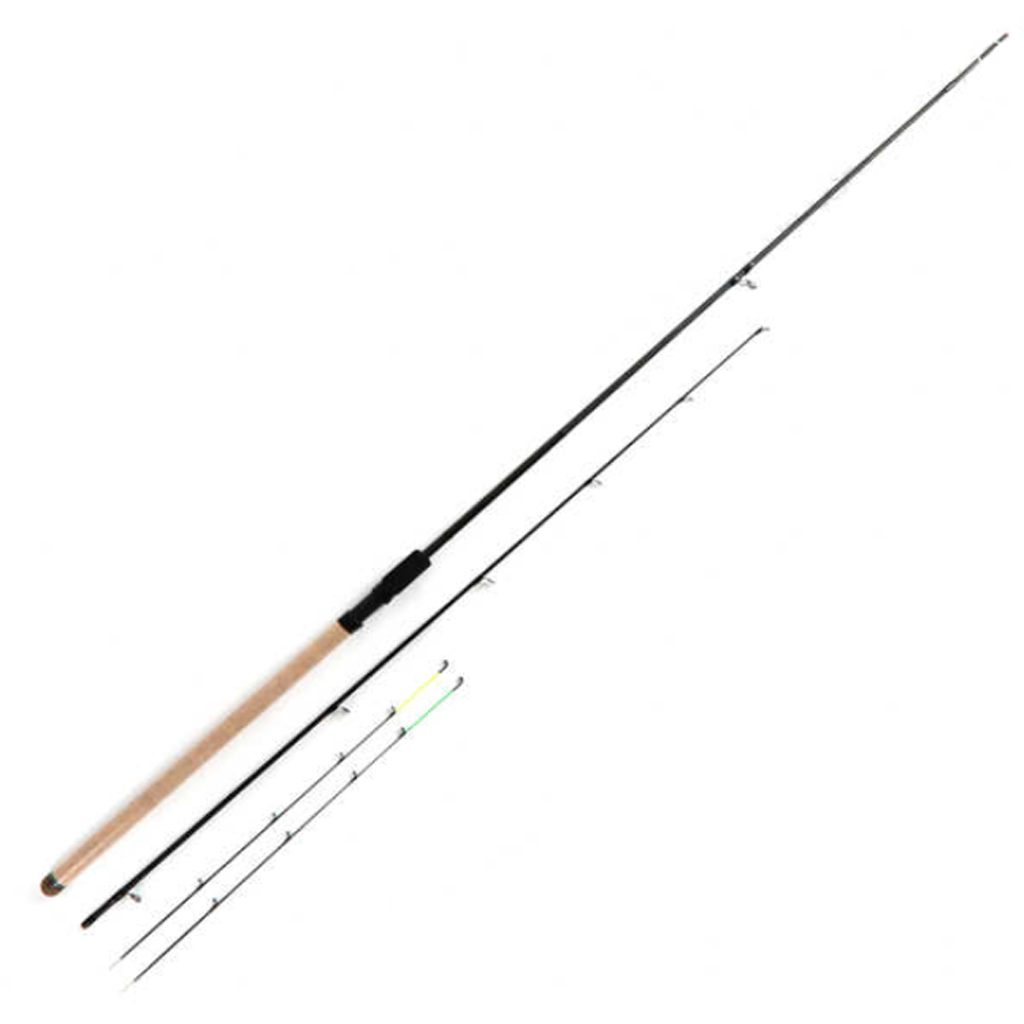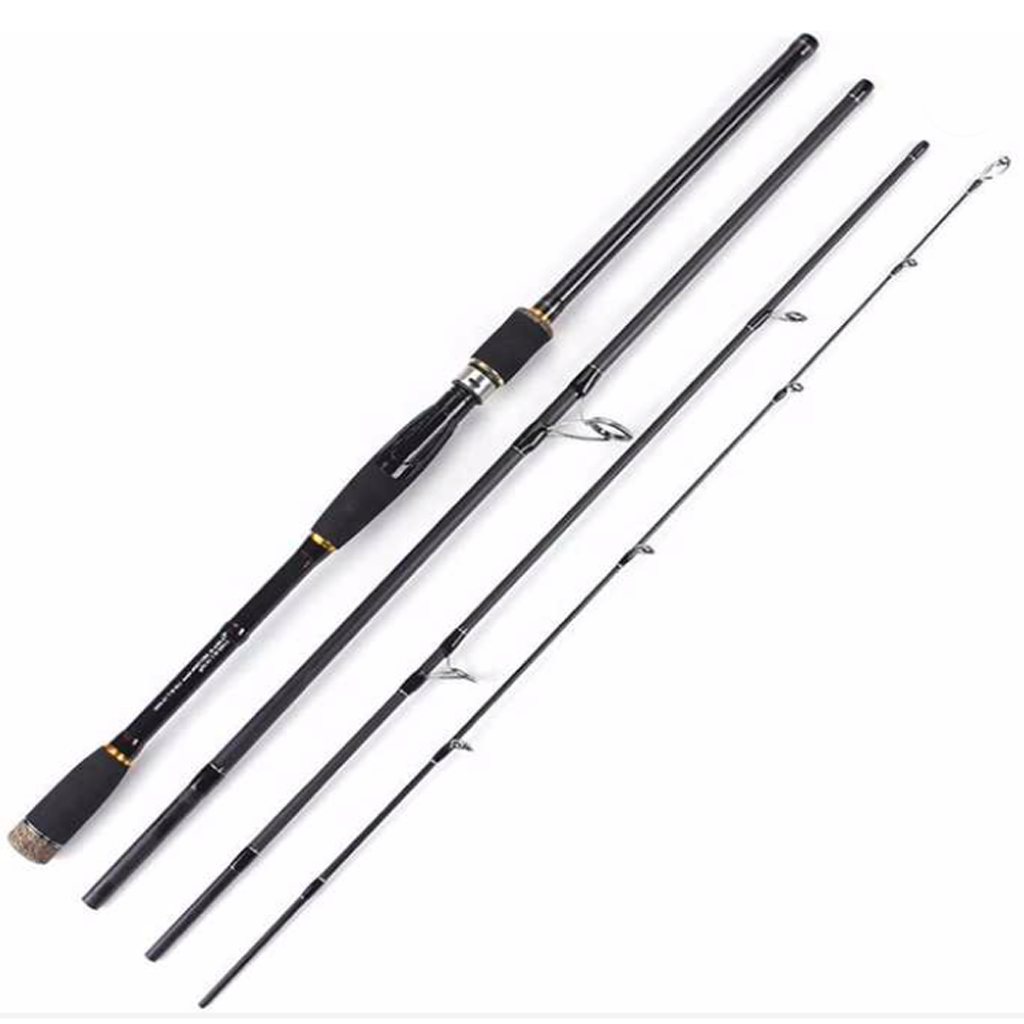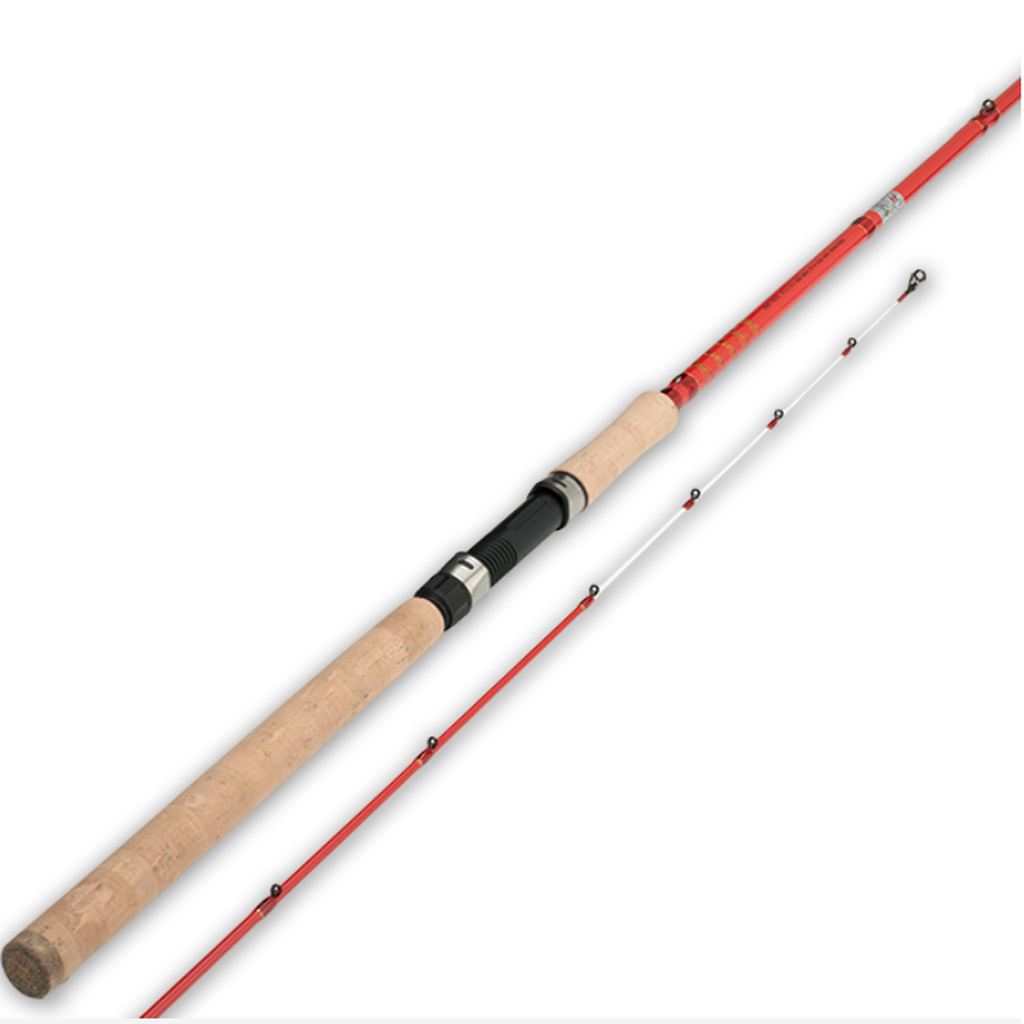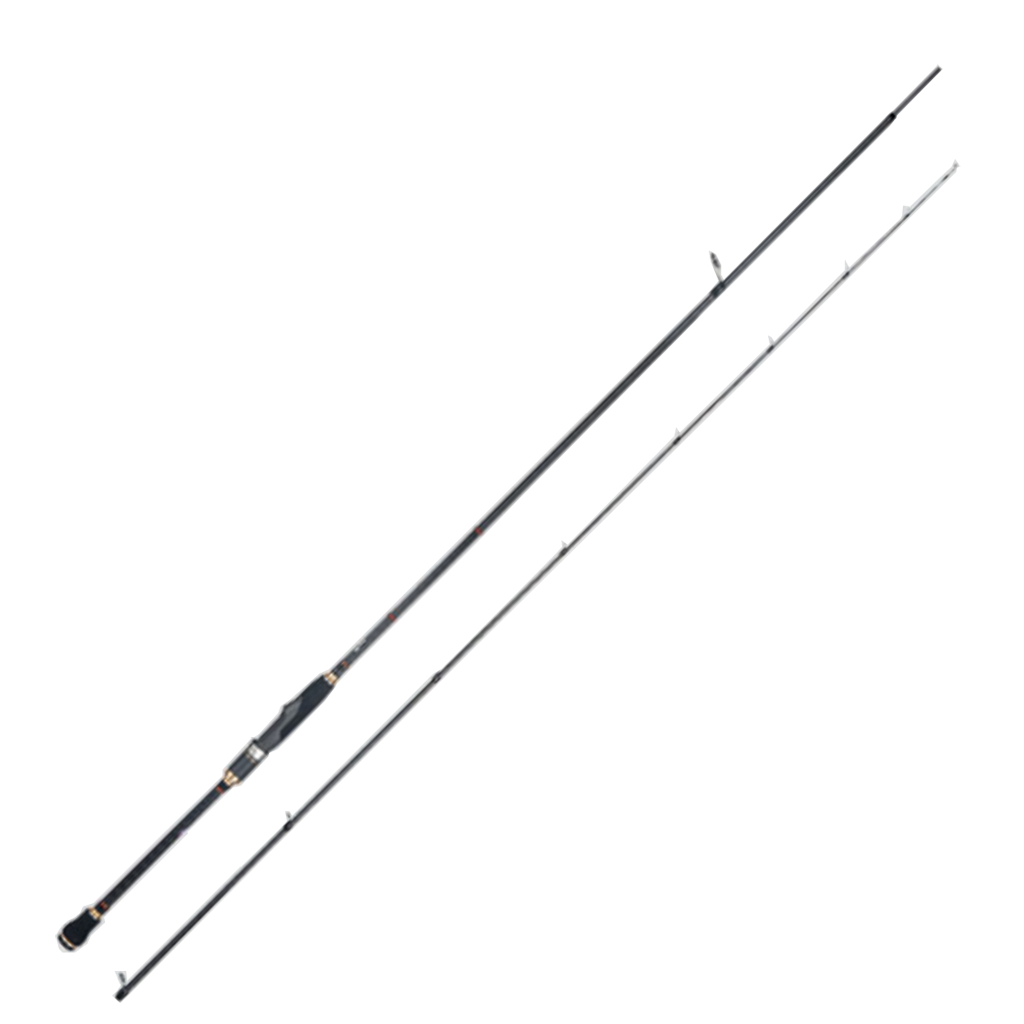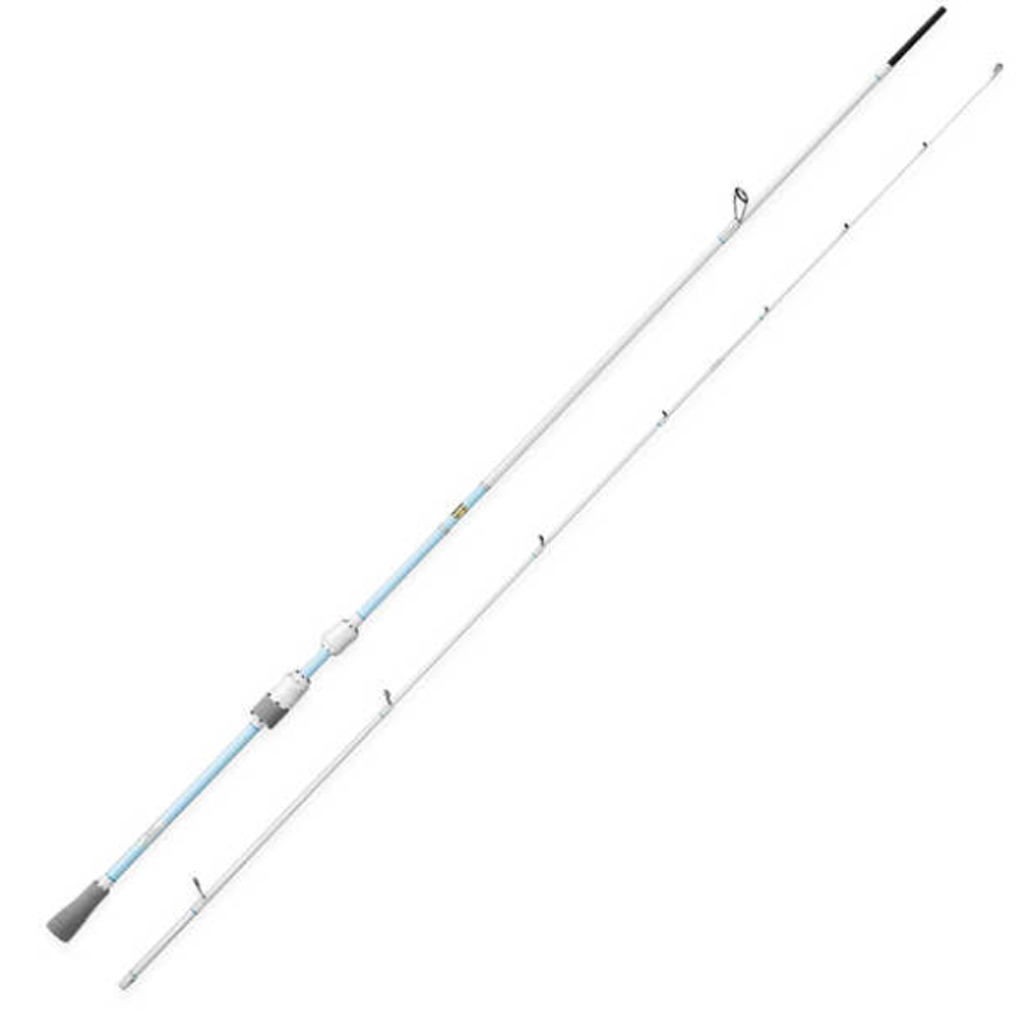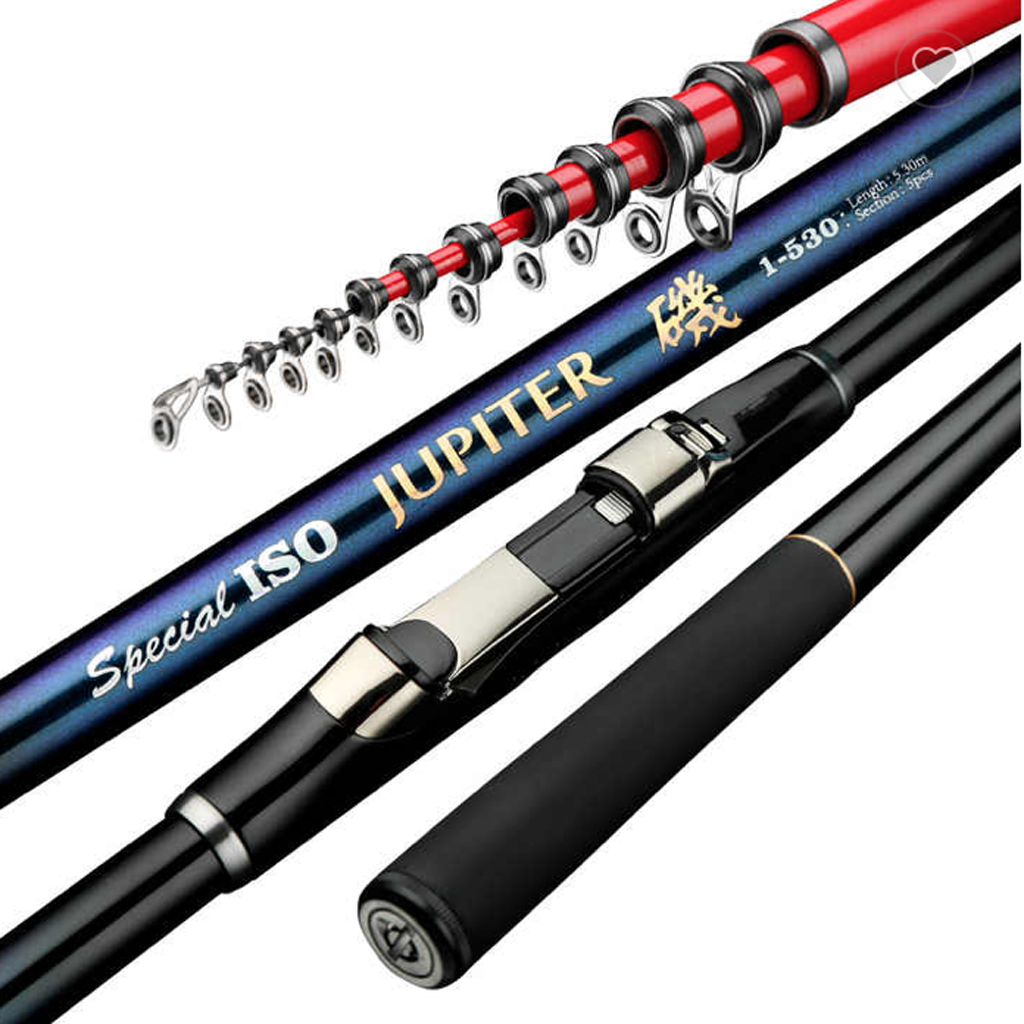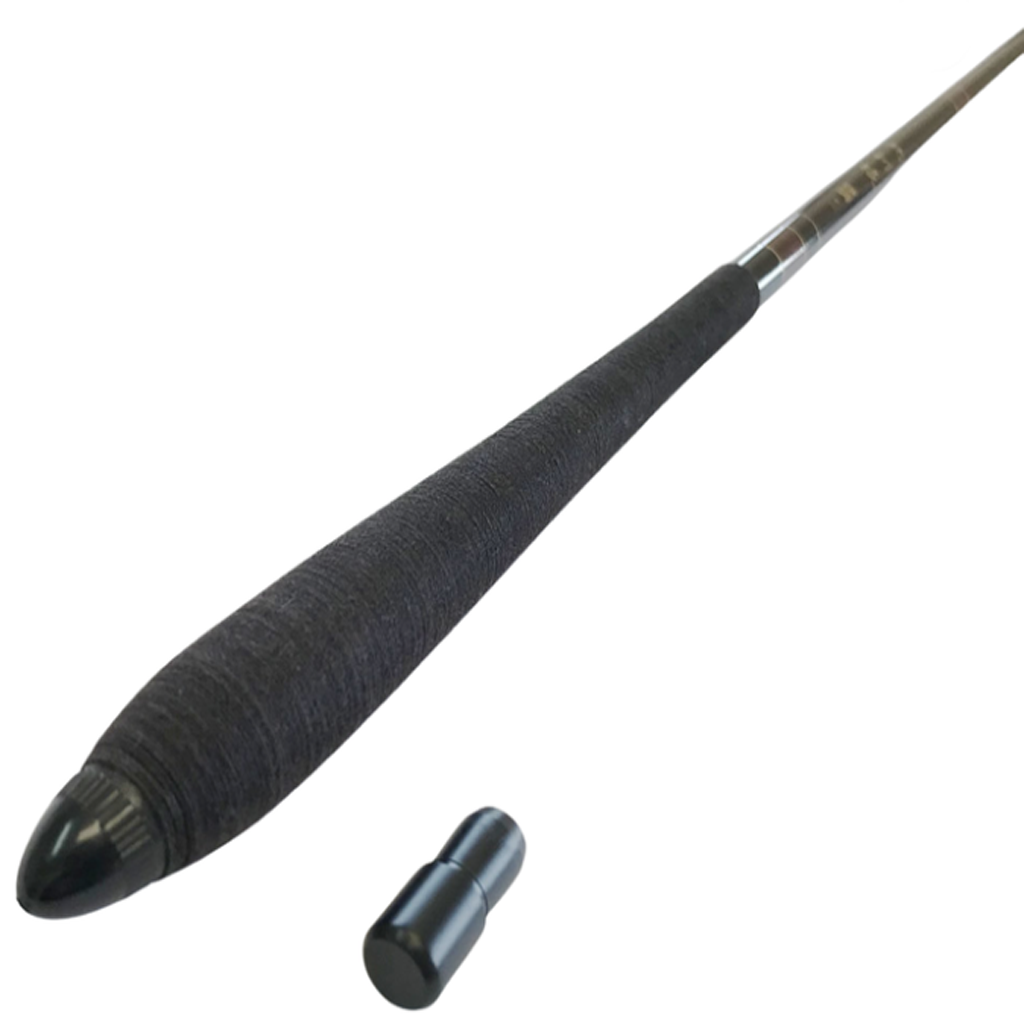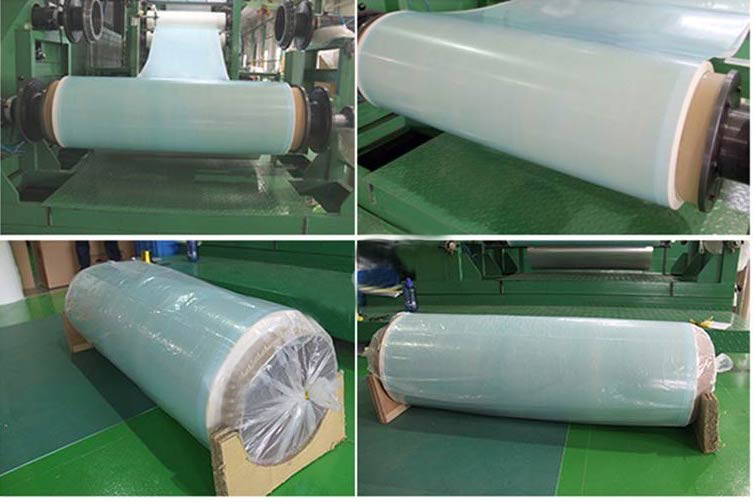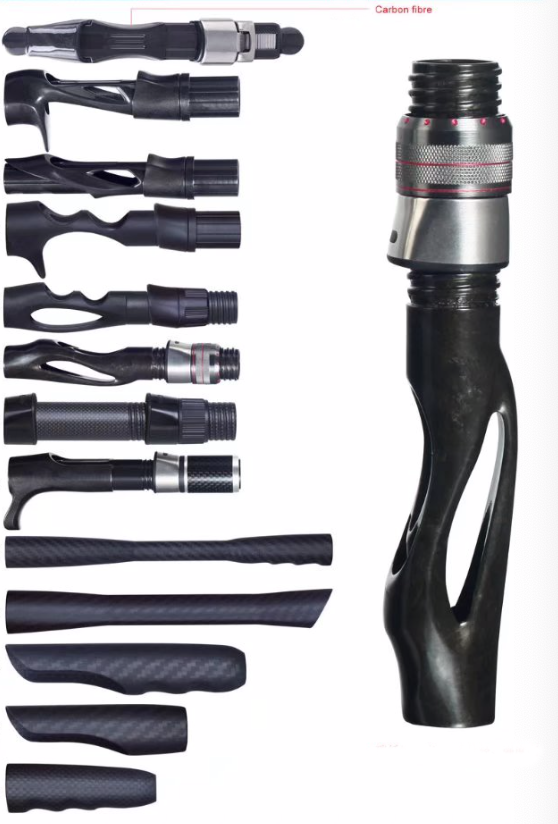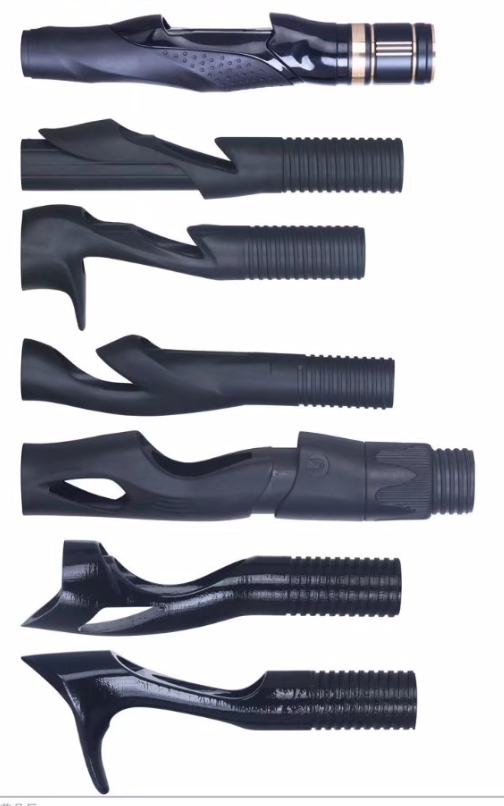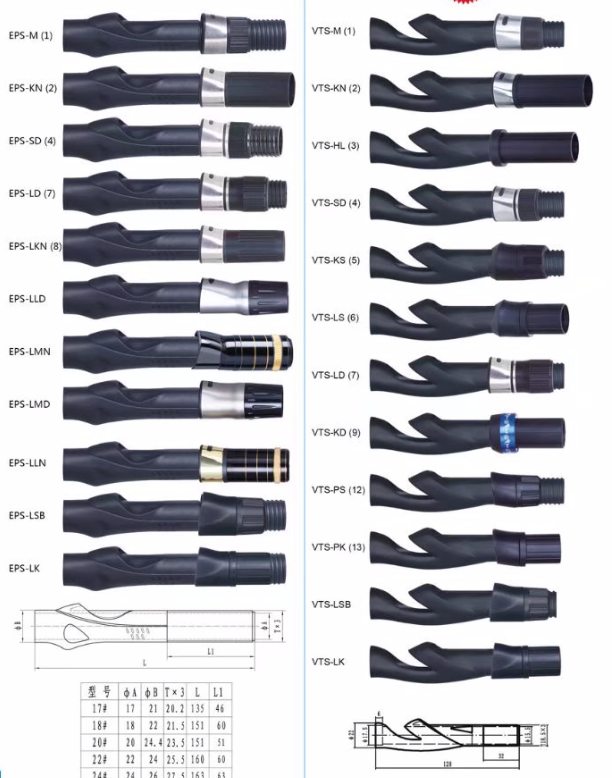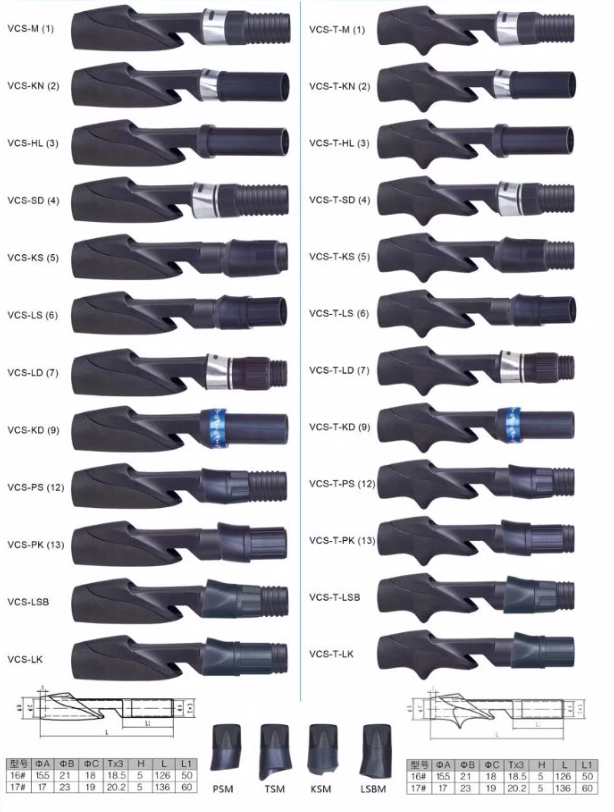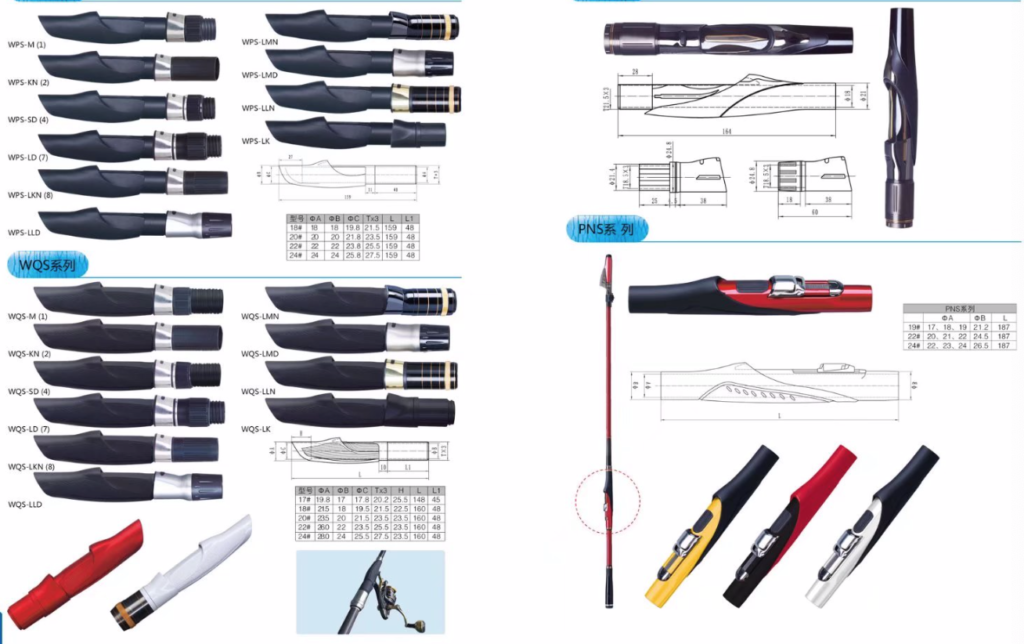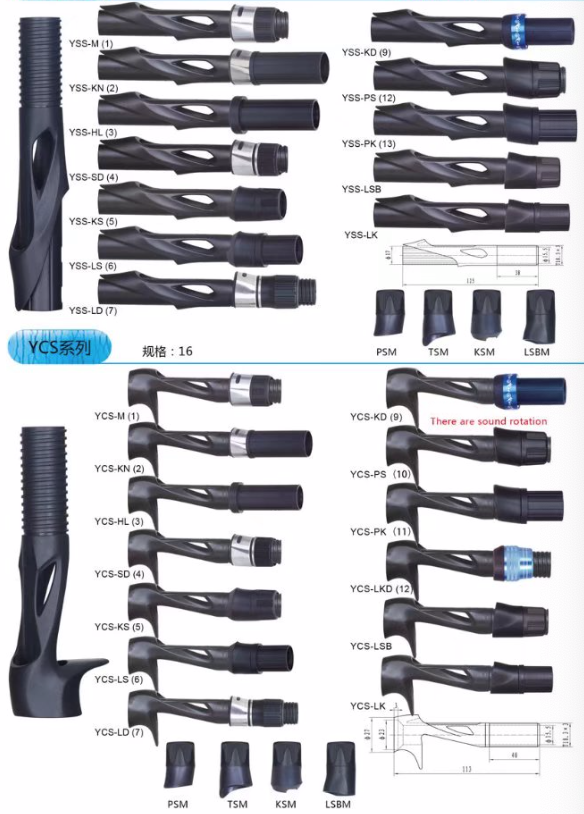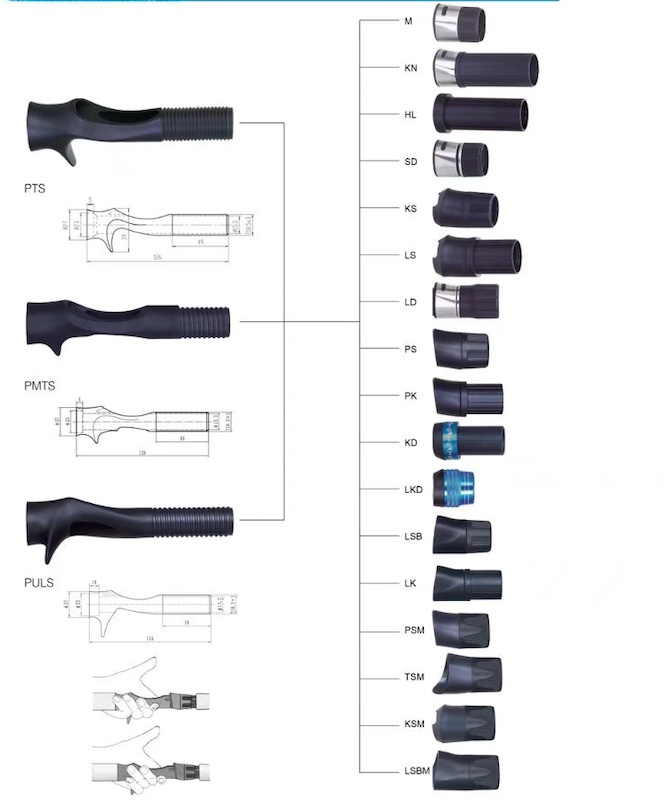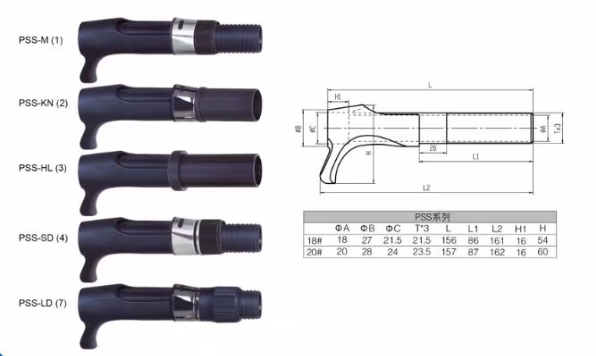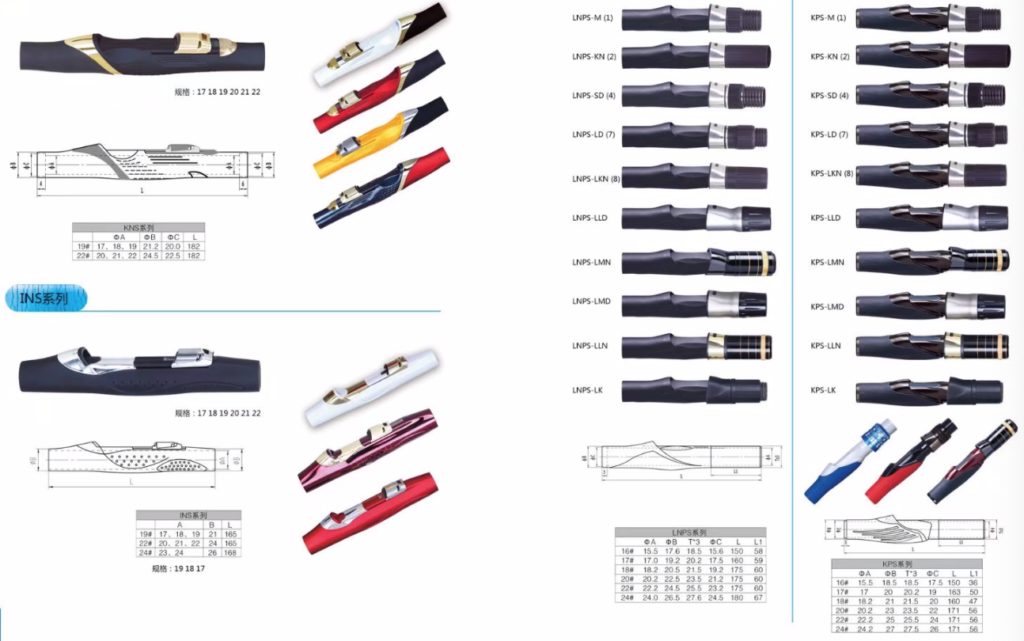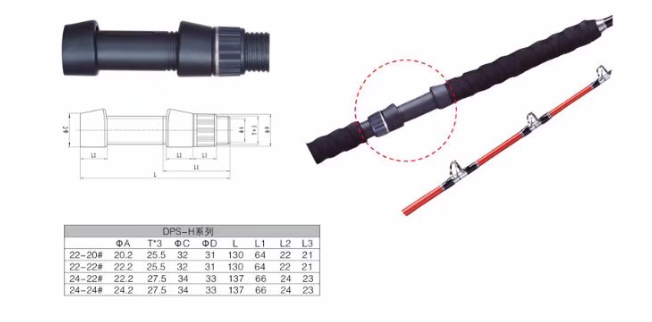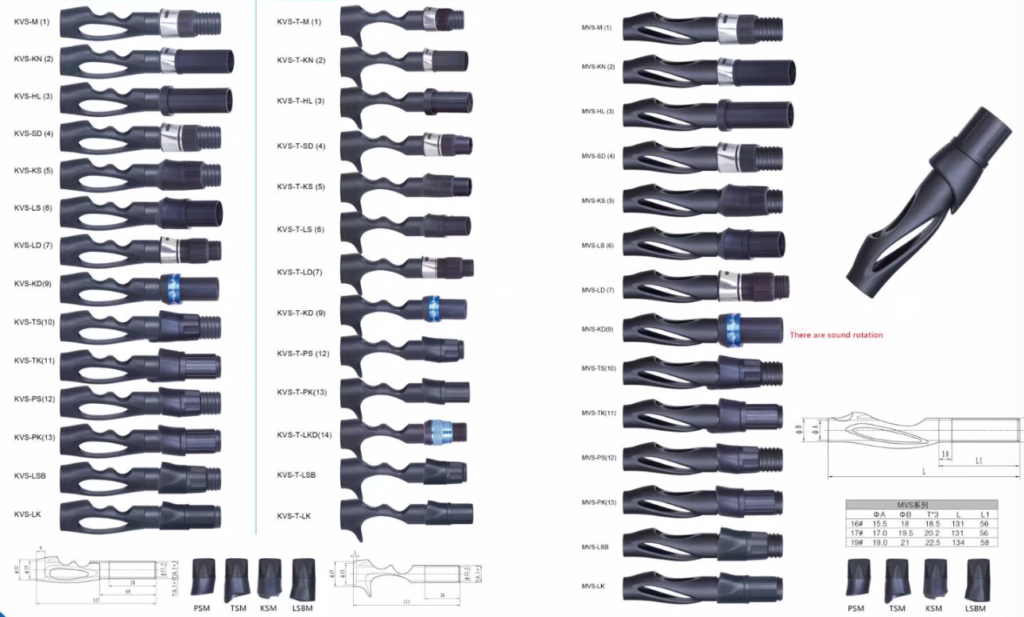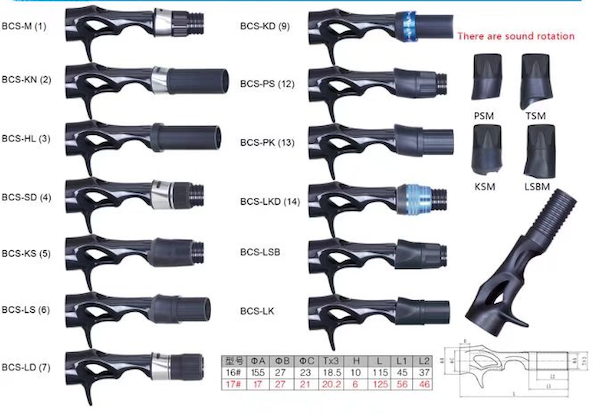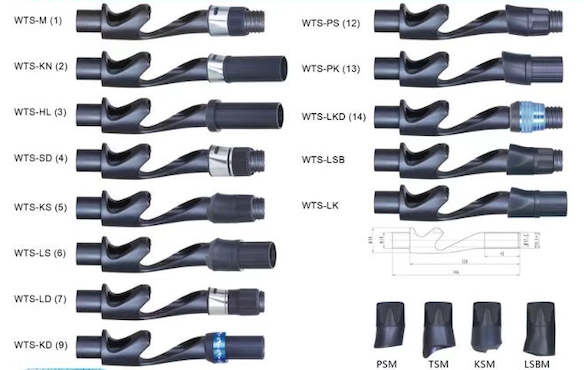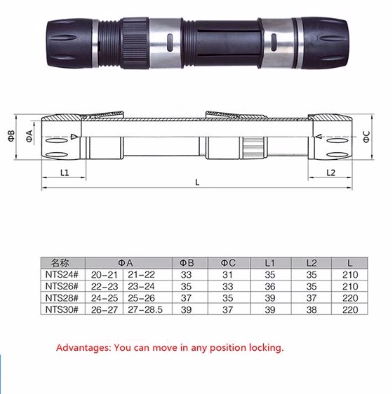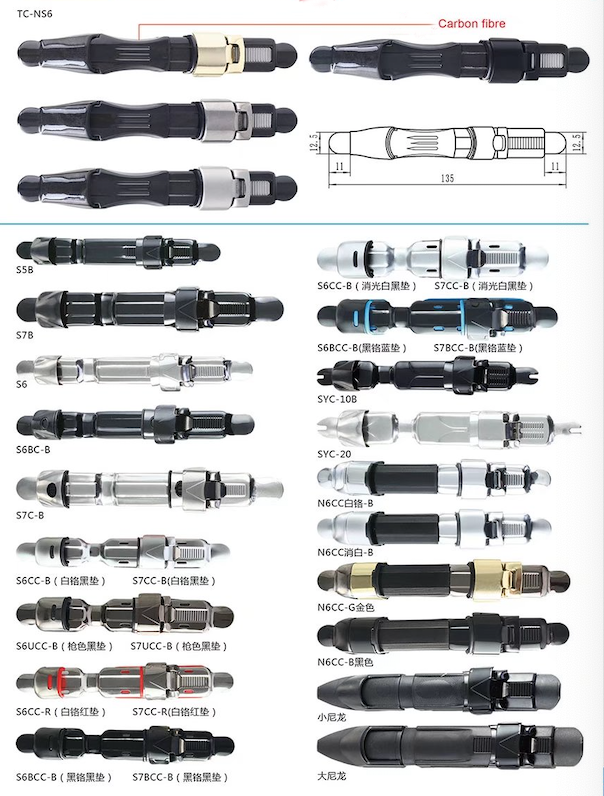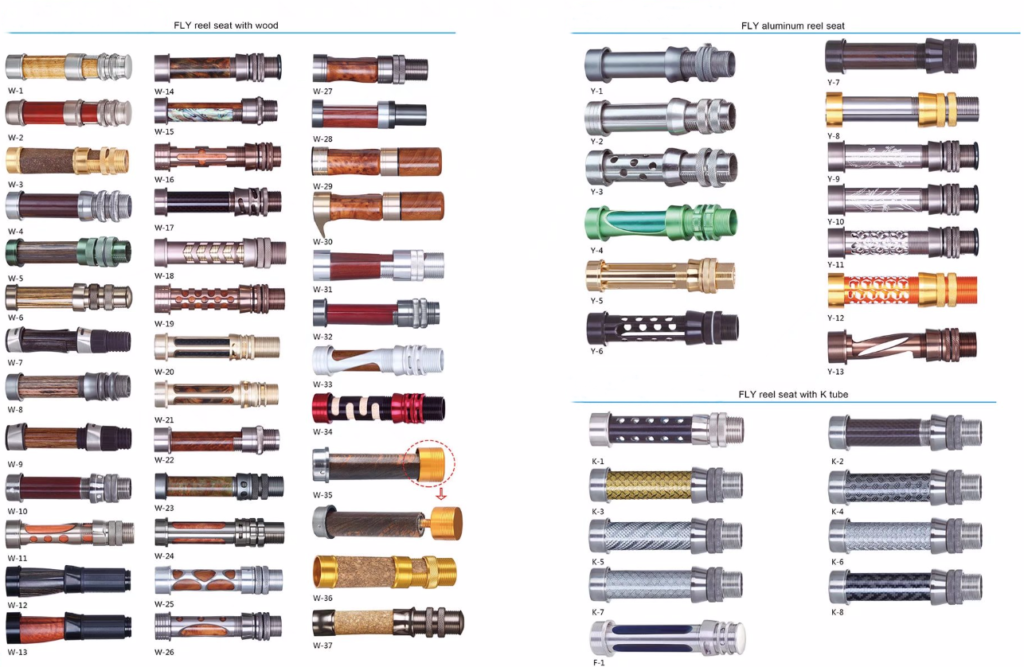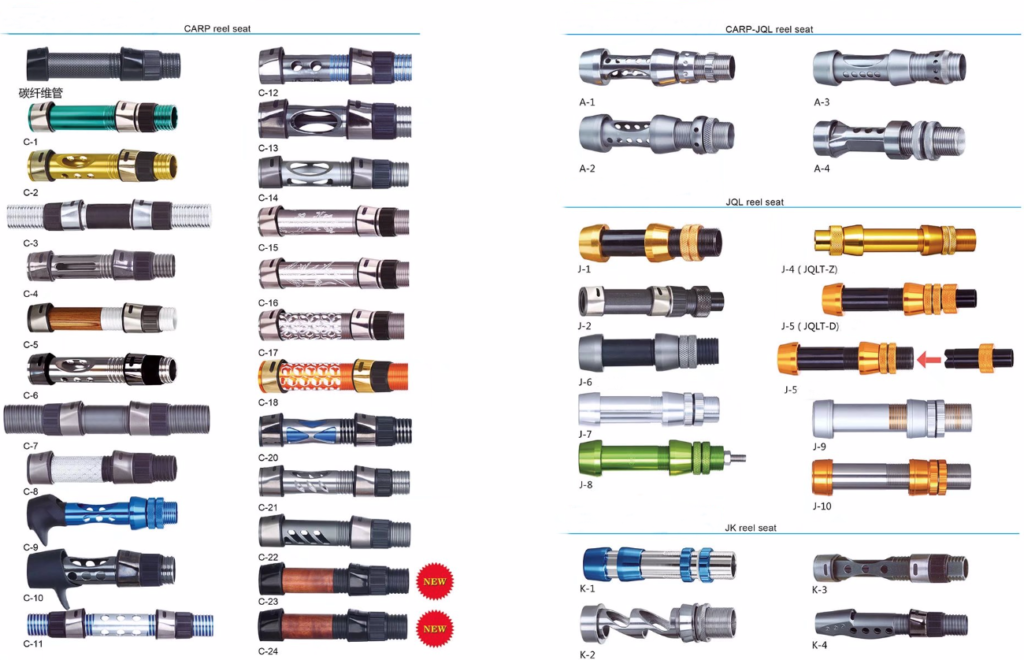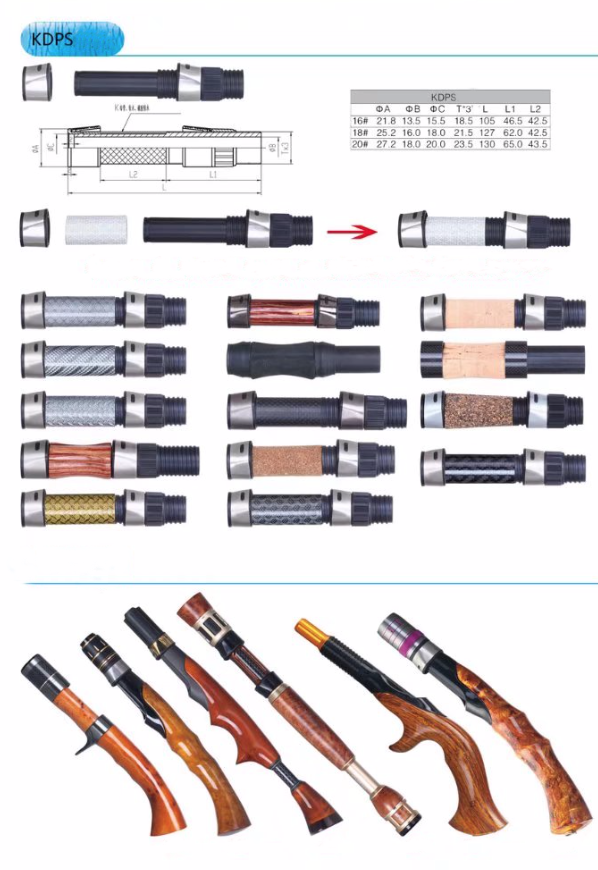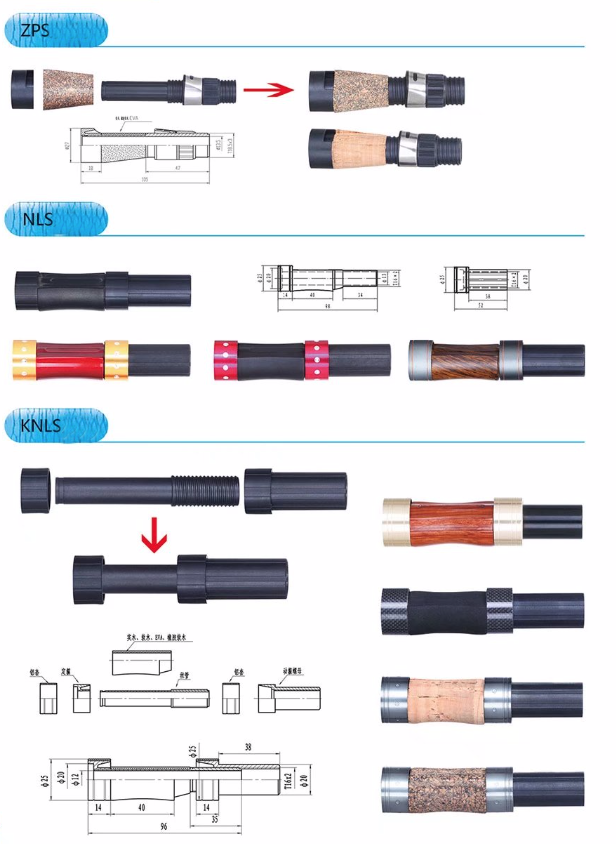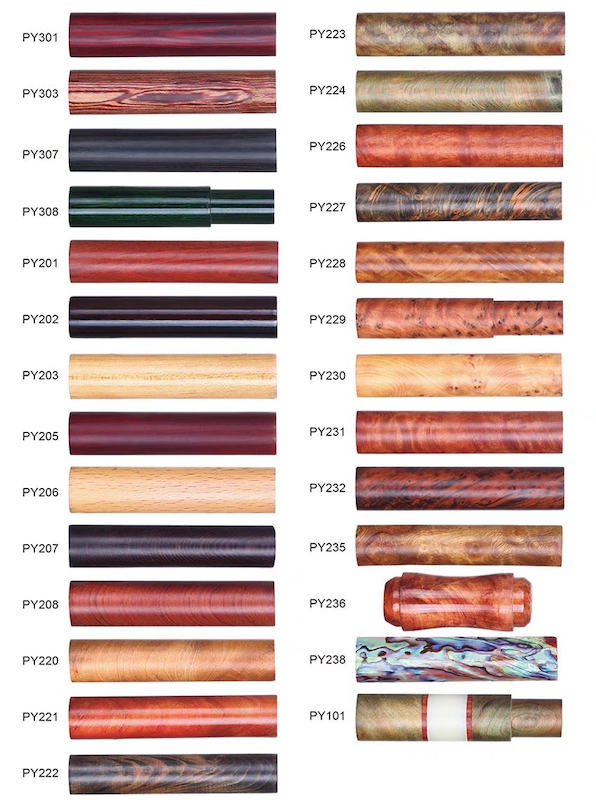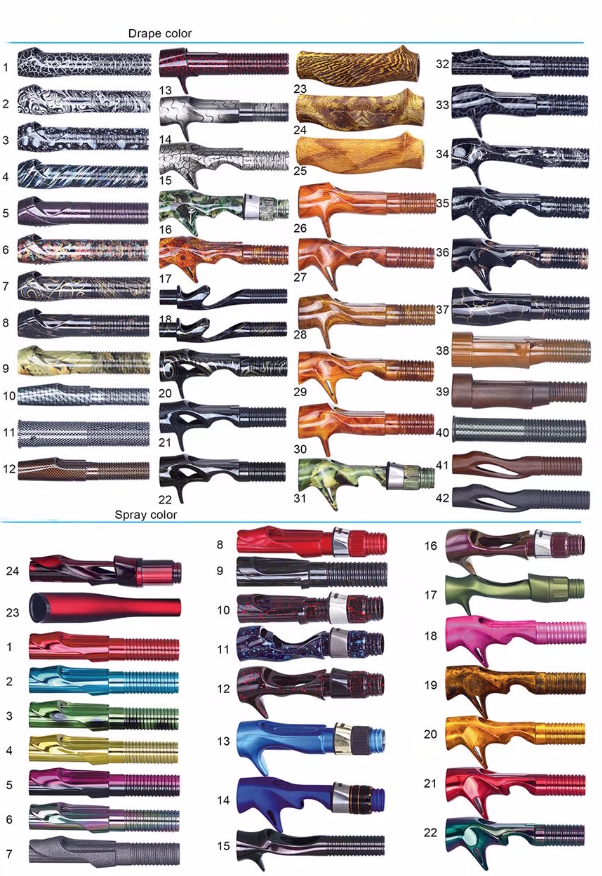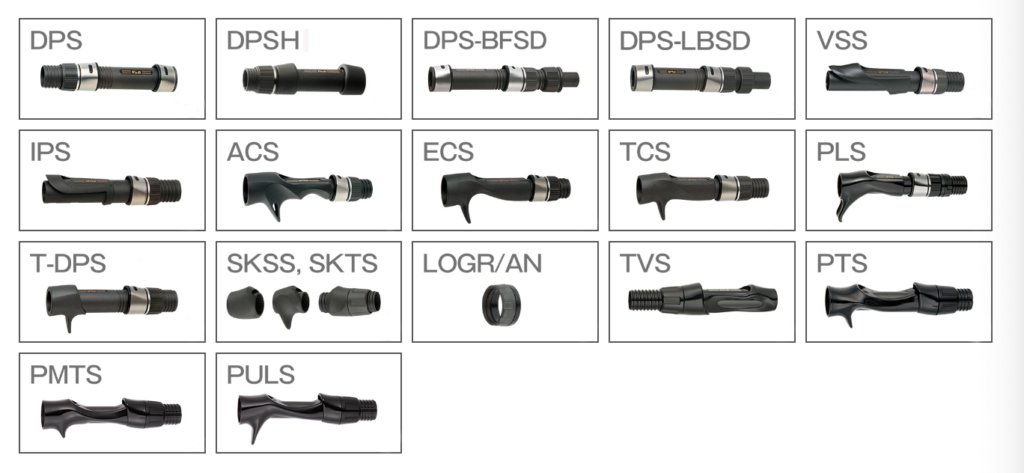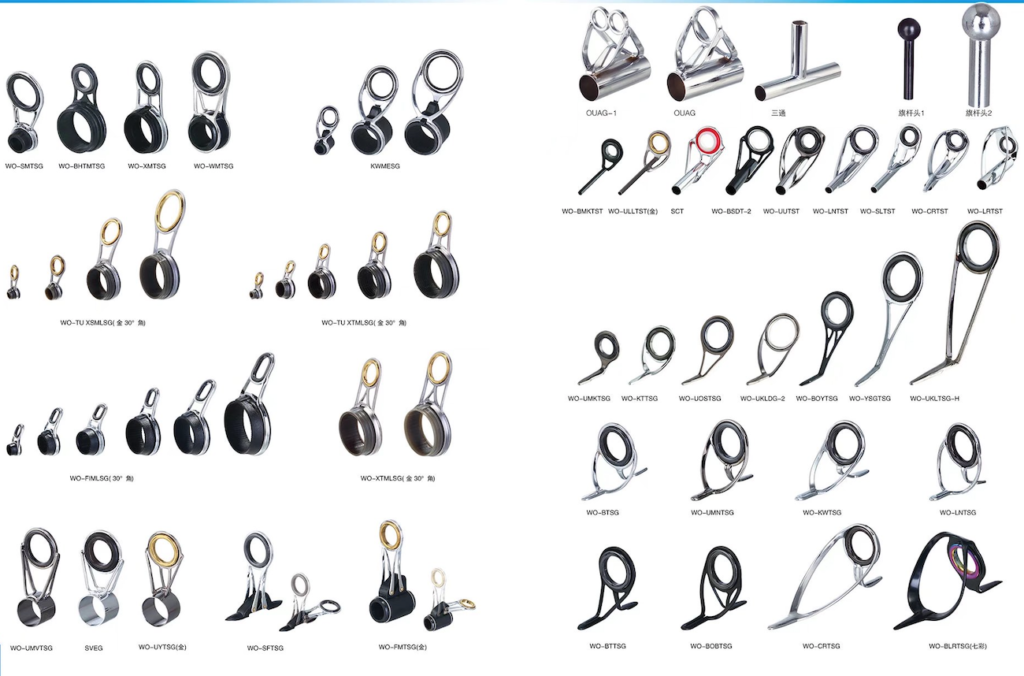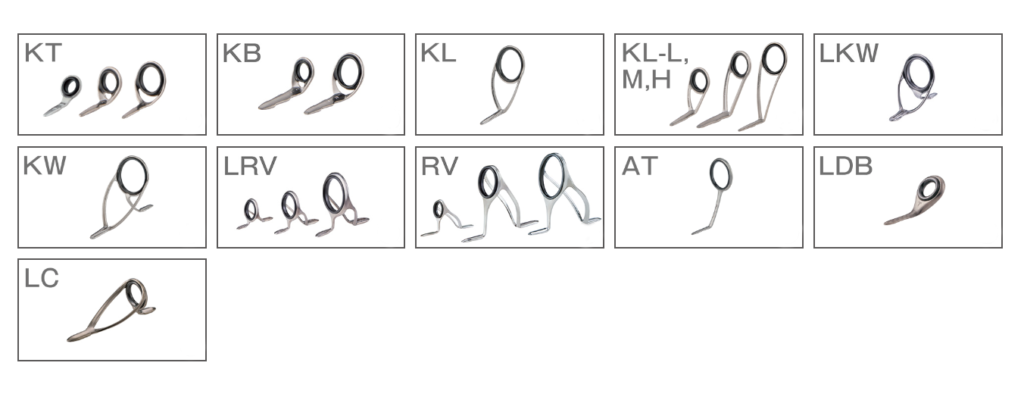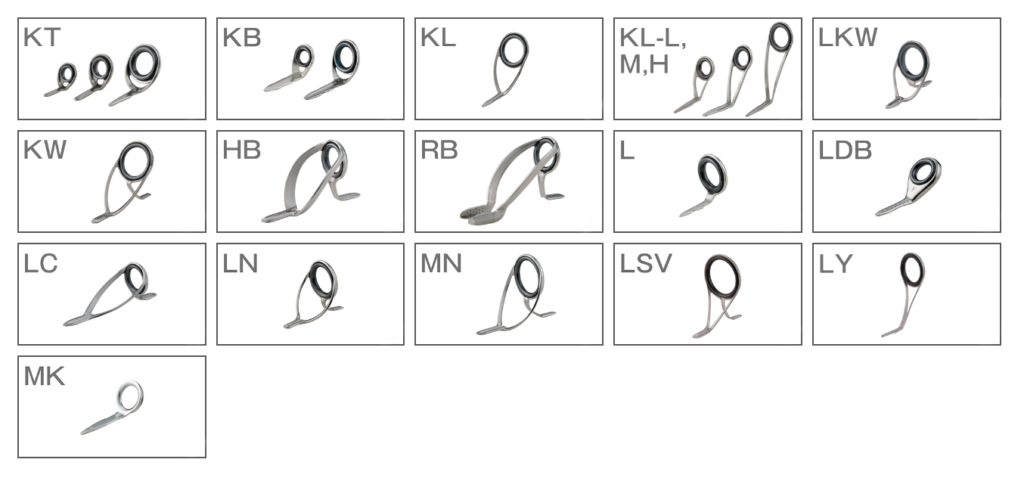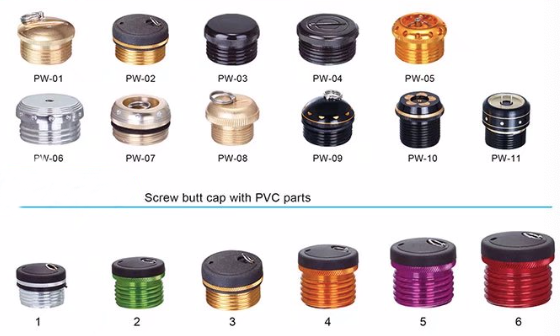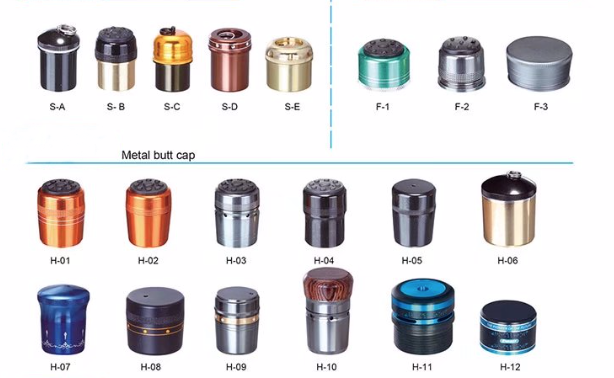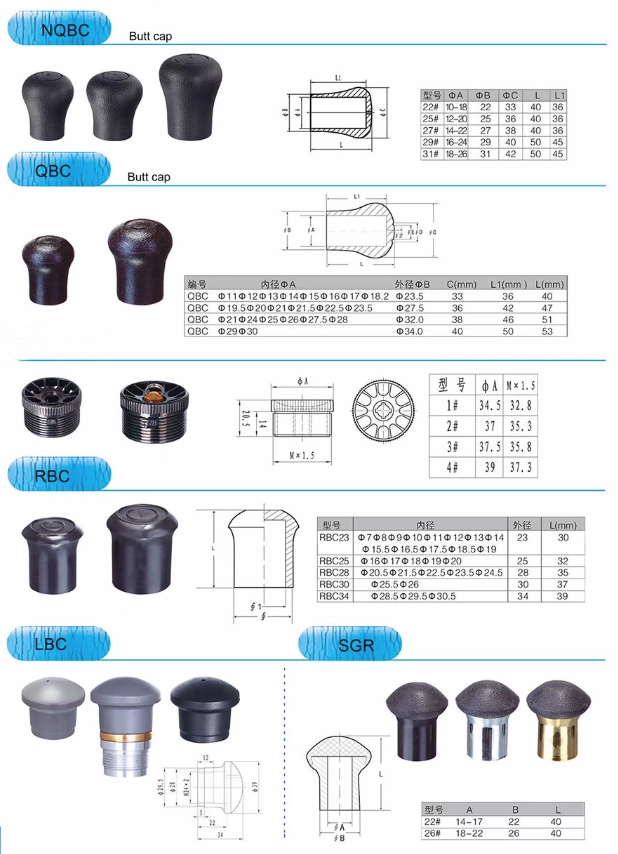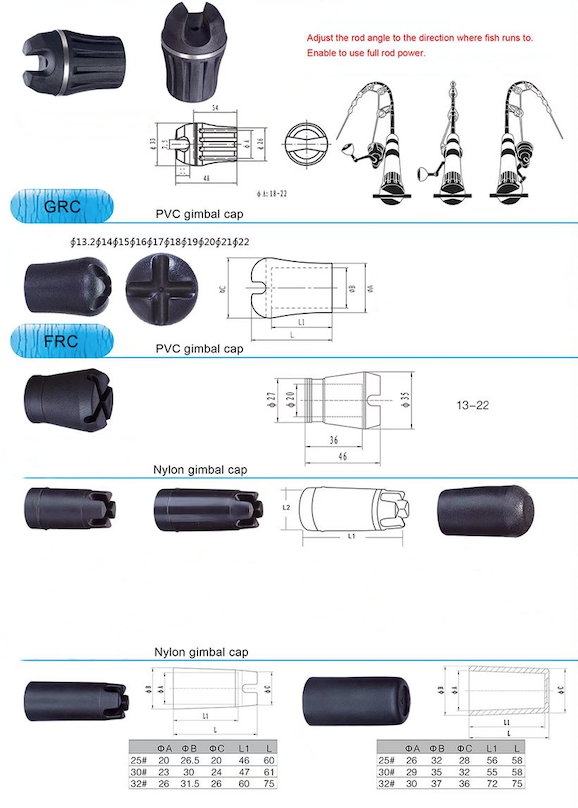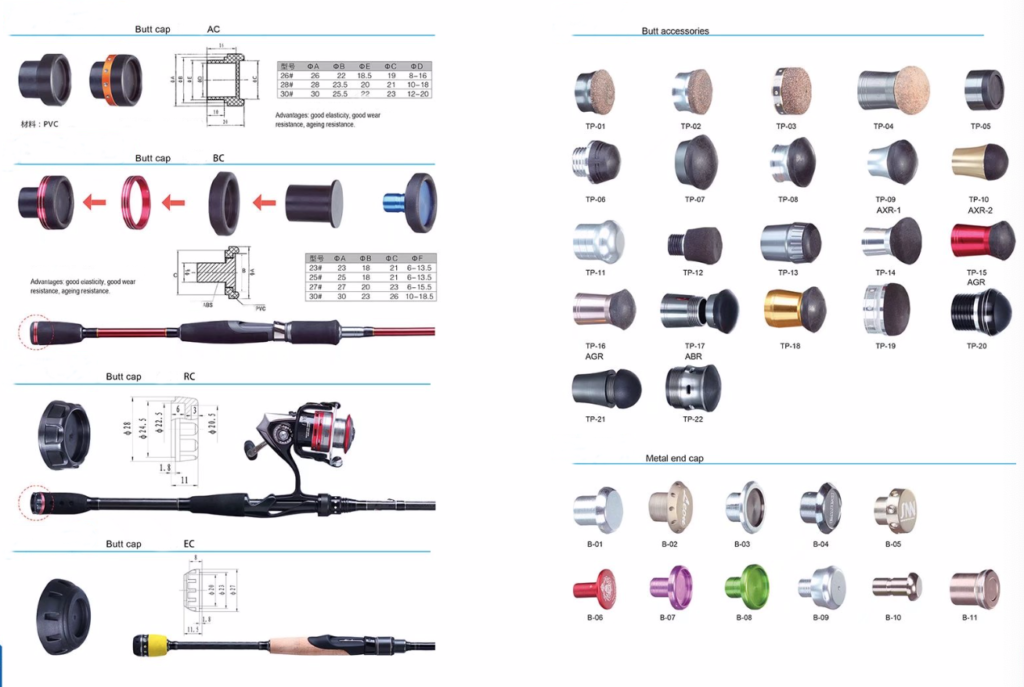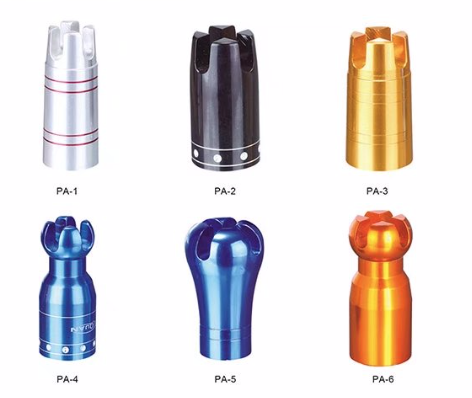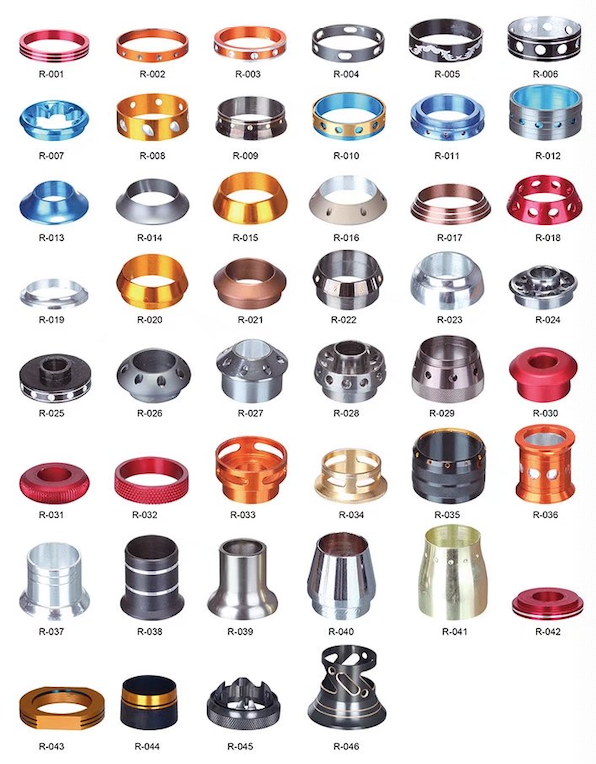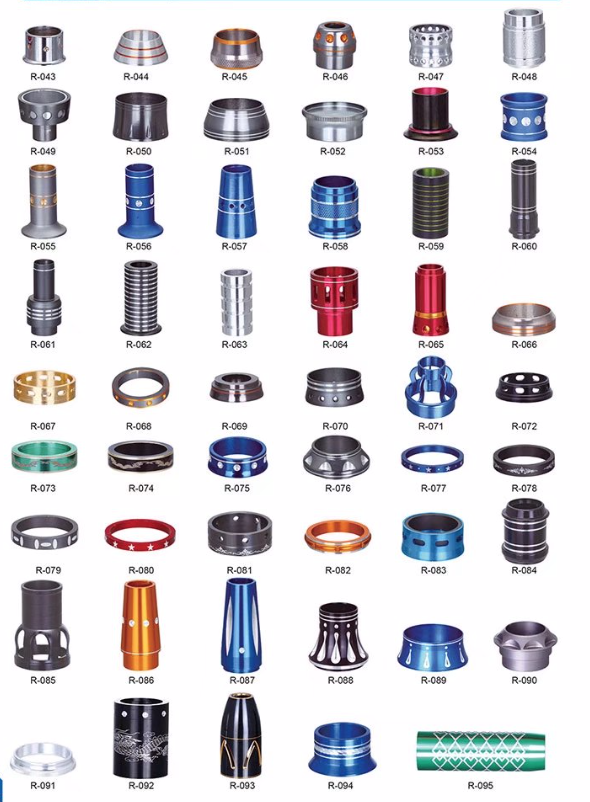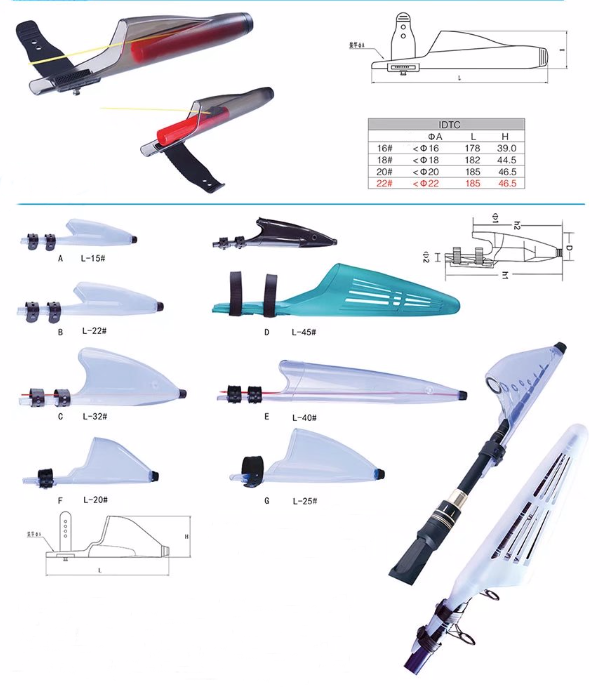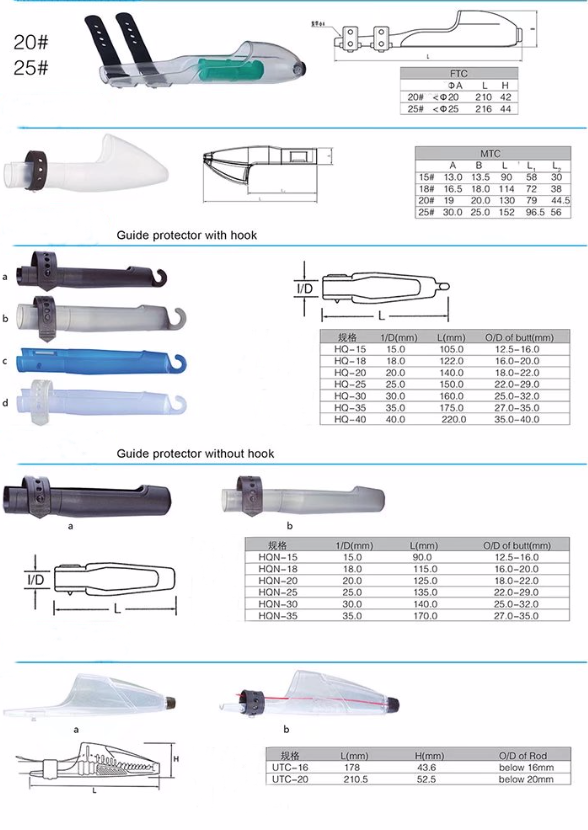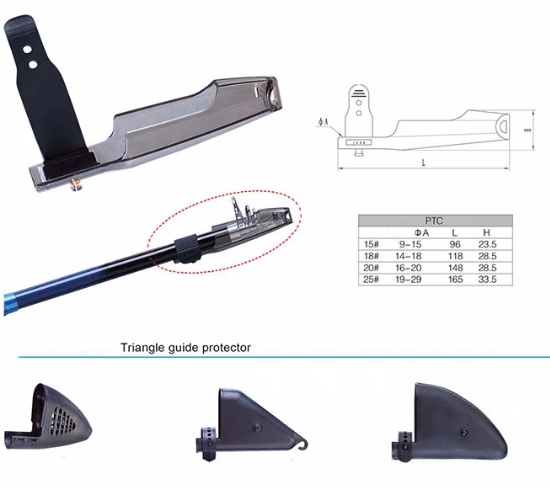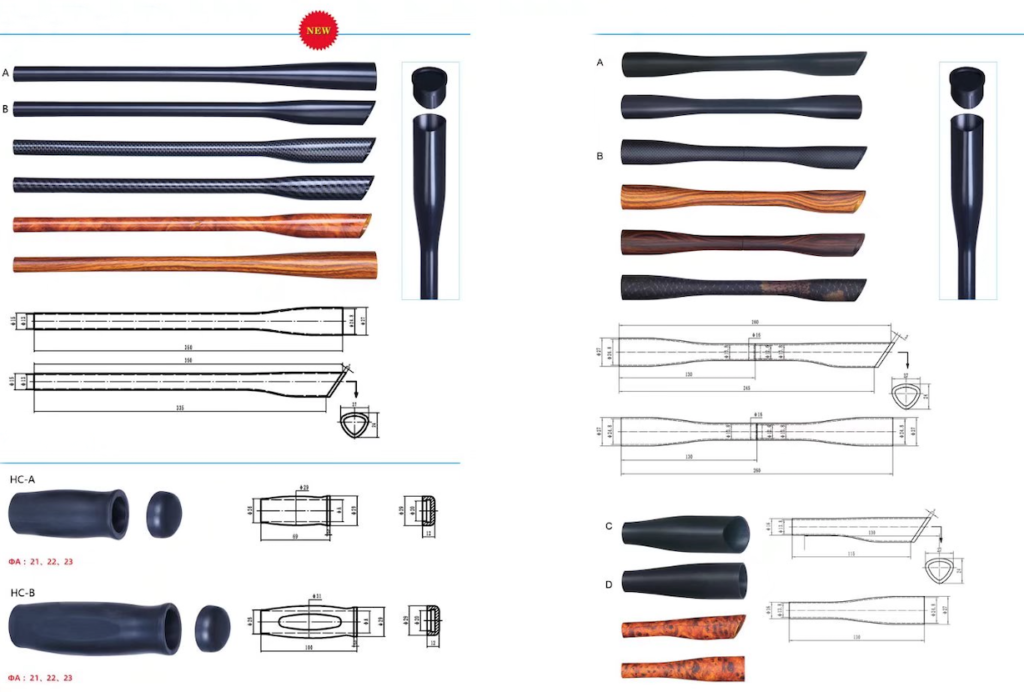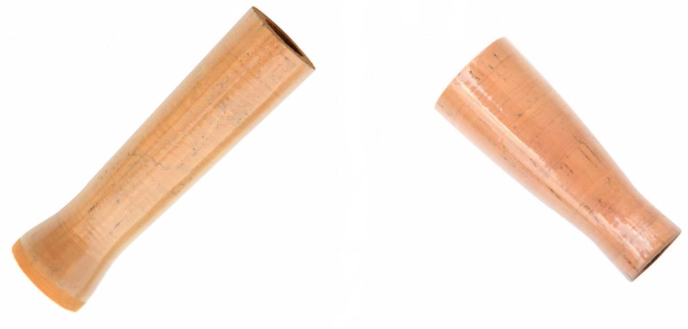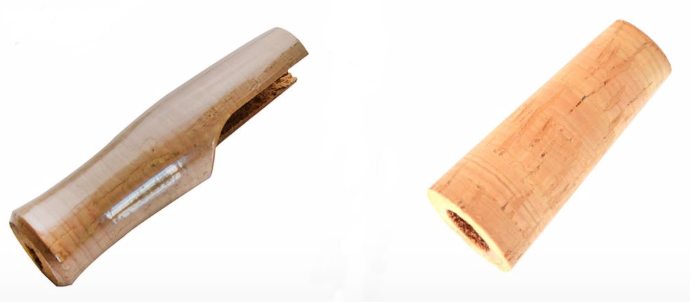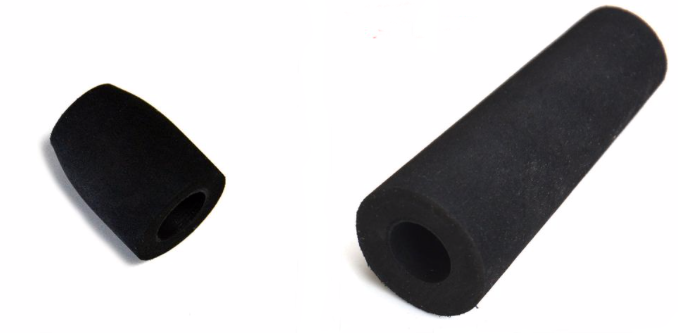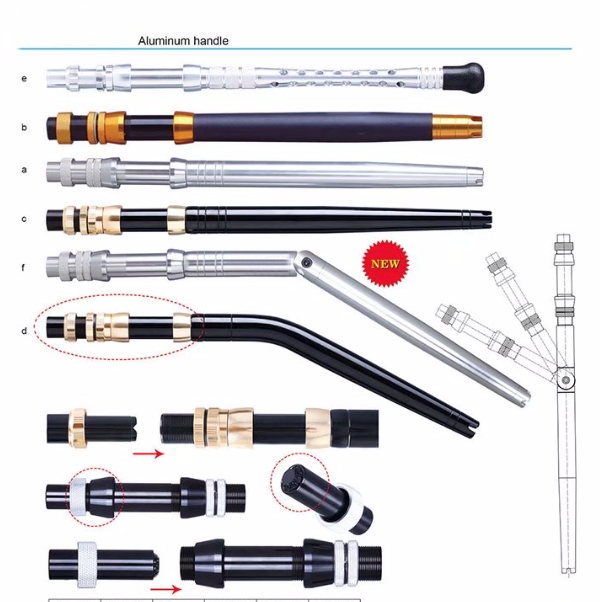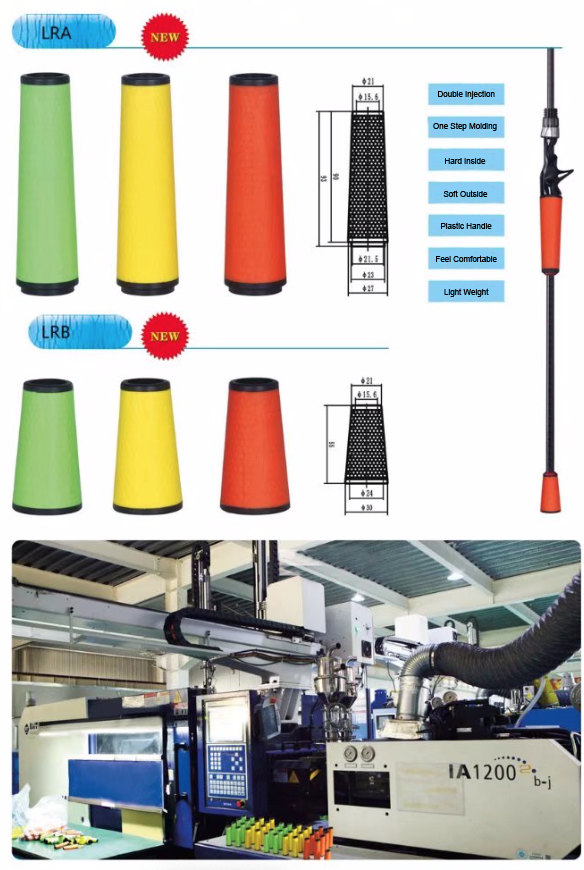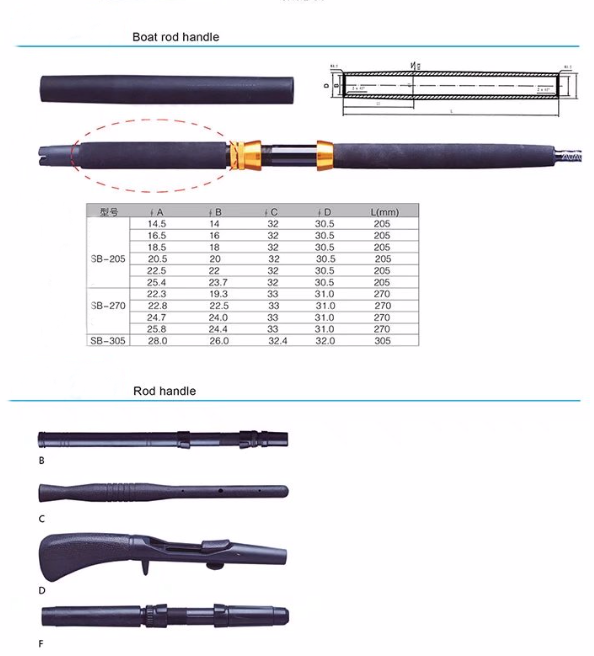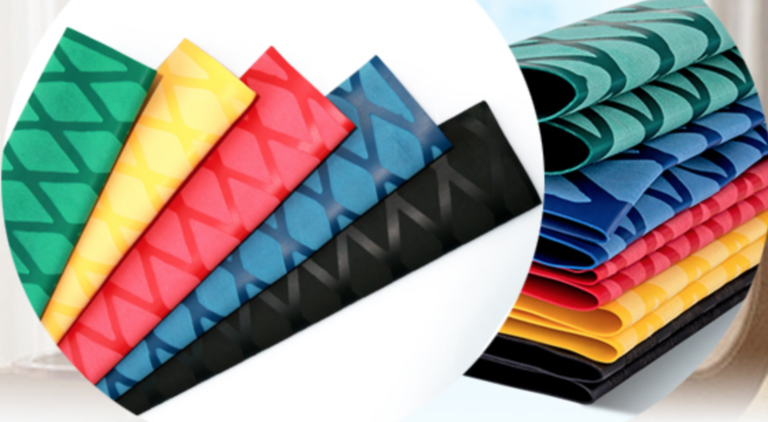Fishing rod handles are divided into carbon handles, cork handles, EVA handles, Aluminum handles, hard plastic handles, soft plastic handles and heat-shrinkable tube handles. Let’s talk about common carbon handles, cork handles and EVA handles.
First of all, carbon handles can be divided into the following two types:
1. Carbon fiber grips — basically carbon chains mixed with resin or glue. The material is then pressed into a prefabricated mold to form any shape you can imagine.
2. Carbon cloth grips – made of a similar material to fishing rods. It uses carbon cloth mixed with resin or glue. This type of approach is difficult to form and usually made into simple shapes, but technological improvements have now made it possible to produce more complex structures. It would be expensive and difficult to make complex carbon grips using this process. The above two types can be further divided into the following categories:
a. Smooth surface – A special resin coating is used to create a glossy and smooth surface.
b. Rubber coating – This type of coating is usually used to add friction to the surface of a smooth carbon grip, but when applied, it reduces the finish to a matte finish, which can also be a factor in appearance.
c. Rough surface – Some carbon fabric grips provide friction by using the rough texture of the grip surface. They are made with as little coating as possible so that the rough surface of the carbon fabric provides more friction.
Carbon handle features:
1. Appearance: When it comes to appearance, the carbon fiber grip will have a higher ceiling than the other two materials EVA and cork, with more room for design, and color options. There are few restrictions as long as the money is in place. The carbon fiber grip is the perfect place for designers to show off their ability to design products according to their own aesthetic sense. The surface can be designed to be rough, smooth, various textures, and you can even print any picture on it.
2. Grip feeling: The carbon fiber grip is not the most comfortable grip, to be honest. They are cool to the touch, especially in winter. Carbon fiber doesn’t deform, it doesn’t become a better fit for your hand over time. A smooth carbon fiber grip is smooth, while a rubber-coated or rough finish is better.
3. Performance: The carbon fiber grip is superior in conductivity sensitivity because it is stiffer than the other two materials. However, much depends on how the grip is made. If the grip has thick walls or is coated with thick resin then the vibration transfer of the rod will be affected, but if the carbon is produced from high quality carbon then the sensitivity will be significantly increased. In fact, depending on the shape of the handle, it can be used as a vibration-amplifying device. The manufacturing process can also determine whether the clips are lighter or heavier than the other two materials. There are so many variations on this issue that there is no way to promote them, even under the same manufacturer. Carbon grip must be evaluated against the basis of the product. But in addition to the characteristics of the material itself, sensitivity is also greatly affected by the production process. If the grip has a thick resin coating on it or is made thick itself, it will also be less sensitive. Also, the shape of the grip affects its agility. Under normal circumstances, the weight of the carbon grip is the lightest, but it also depends on the actual rod type to decide how much material to use the grip. A lighter grip will definitely use less material and be more sensitive but will definitely sacrifice its strength in relative terms.
4. Durability: As with performance, this depends on the type of carbon grip and how it is made, but in most cases carbon grips are more durable than cork grips, but not as durable as EVA grips. Carbon grips made of extremely thin carbon materials are as brittle as a fishing rod body and can break when accidentally hit something hard. This kind of splintering is impossible to repair and basically makes it useless as a grip. They are also easily scratched and may need to be taken to a special paint shop to be repaired. Thicker grips can of course withstand more force and are stronger, but they are still not recommended for use on boat holders because even a minor injury can cause serious damage when the grip is stressed later on.
5. Maintenance: Physical damage aside, carbon grips are easy to maintain. They’re easy to clean, don’t age over time, don’t grow moldy and don’t require any special storage. Smooth carbon grips should be cleaned and placed with care to prevent scratching.
Second for Cork handle: One of the oldest grip materials, still in use today. The cork grip is definitely the favorite type of grip for many experienced anglers who love the classic look of cork as well as its comfort.
Cork handle features:
1. Appearance: The cork grip gives the rod a more natural and classical look. But cork generally can’t be colored artificially because it doesn’t hold its color well. And because of the nature of cork itself, it can not be as free as other materials to design shapes and carve shapes. Cork grips are more limited in color matching, both lighter and darker wood grain colors are not as easy to match as black, white and gray grips.
2. Grip feeling: Let’s face it, no matter what your fishing style is, cork grip is unmatched by almost any other material. (EVA feels close to the texture of cork when it is rainy or very cold). The cork grip holds more heat when it is cold and feels relatively warmer in the hand. Moreover, it is hydrophobic and maintains a certain amount of friction even when it is soaked. Some fishermen also sandpaper the cork grip to make it the most comfortable for their own grip.
3. Performance: Cork is a relatively light material, but it is not as light as EVA. However, the difference in the feel of this weight is not obvious, which can be directly ignored to a large extent. Cork transmits vibrations better than EVA, but again the difference is not obvious, especially for non-fine fishing. In fact, most fishing methods do not rely on the increased sensitivity of the grip, the grip of the rod for increased sensitivity can be said to be overhyped.
4. Durability: Of the three materials, cork is the least durable. In fact, the cork grip is so fragile that frequent, intense continuous fishing may cause irreparable wear in six months or even two or three months. Also, if you are in a boat or any other situation where you need to stick your rod in a rough rod frame or hole, you should not use a cork-handle rod. Cork grips can easily crack or damage when placed in the rod frame. Cork also has the highest natural corrosion rate. Cork is environmentally friendly, but it’s not practical if you want to use it for a long time without any maintenance. There are many products that increase the durability of the cork material, but adding these protective coatings may also alter the properties of the cork without altering its inherent fragility.
5. Maintenance: Cork cleaning isn’t too difficult, but it’s a lot more difficult than the other two materials, and you need to keep the cork dry after each use and cleaning so it doesn’t develop mildew. It is best to use a protective coat when using a fishing rod with a cork grip, especially if you live in wet areas. However, after coating the protective layer, the feel of cork will change, which is a lot of fishing friends can not accept. Of these three materials, cork grips are the most in need of maintenance.
Third for EVA handles: EVA is a relatively new material compared to cork. EVA is a favorite material for heavy equipment such as sea fishing and heavy hitch fishing. Among the three materials, EVA is the strongest and more durable with softer feel. It is the cheapest material available and is seen as a low-end fishing rod configuration.
EVA handles features:
1. Appearance: As a fishing rod grip material, EVA has strong plasticity and can be customized in a wide range of colors. As long as the production process is good, it will not fade. It not only has plain black EVA handles but also colorful EVA grips. The biggest disadvantage of EVA material is that it is easy to leave marks on the surface. If you usually carry multiple fishing rods for fishing and there is no proper protection such as a separate rod sleeve, it is easy to press marks on the EVA grip.
2. Grip feeling: EVA is close to cork in terms of comfort. In some situations such as sea fishing for large target fish the EVA grip is much more comfortable than a cork grip because it is softer and can absorb more force without breaking like a cork. That’s why no one uses a cork-handle rod to catch large target fish. Some people say that EVA grips become slippery when they get wet, but one experienced fisherman said he doesn’t feel that way. Wet EVA grips are not overly slippery even when fishing in the rain at sea. This can be a subjective question, though, because people do have different grip styles and different levels of roughness. EVA material has more advantages in the customization of grip shapes. Many heavy rod grips need to be made to fit fingers more closely, which can be achieved by EVA material at a lower cost.
3. Performance: This also depends on the type of EVA used. The denser, stiffer EVA can detect vibrations as easily as cork and is more sensitive, while heavy equipment will use softer EVA. In fact, only a few fishing methods need to rely on the rod sensitivity to improve the success rate of fishing, so the sensitivity ratio of the selection of fishing rod should be seen according to the actual use of the situation. And then the weight of EVA, EVA is slightly lighter than cork, but the difference in weight is not enough to make people choose EVA because of the reduced weight.
4. Durability: Among the above three materials, EVA is the most reliable and durable. Even after many knocks and violent operations, EVA grips can still be used normally. And EVA can withstand extreme temperature, but also has strong anti-aging ability. EVA grip is the only one among the above three materials that can be safely used on the rod holder of a ship. Most of the rod holders where the rod is inserted on the ship are made of metal, and the rod will shake badly due to the influence of waves. In this case, EVA material can play a good role in protecting the rod body, and it will not be seriously damaged.
5. Maintenance: Due to the porous structure of EVA materials, EVA grips are the most difficult to clean and attach to dirt and fish slime, especially when the fish slime is air-dried on the EVA grips. But EVA is an inert plastic, which is less likely to mold or break down over time. In addition to cleaning after use, EVA grips basically do not need any other maintenance means.
